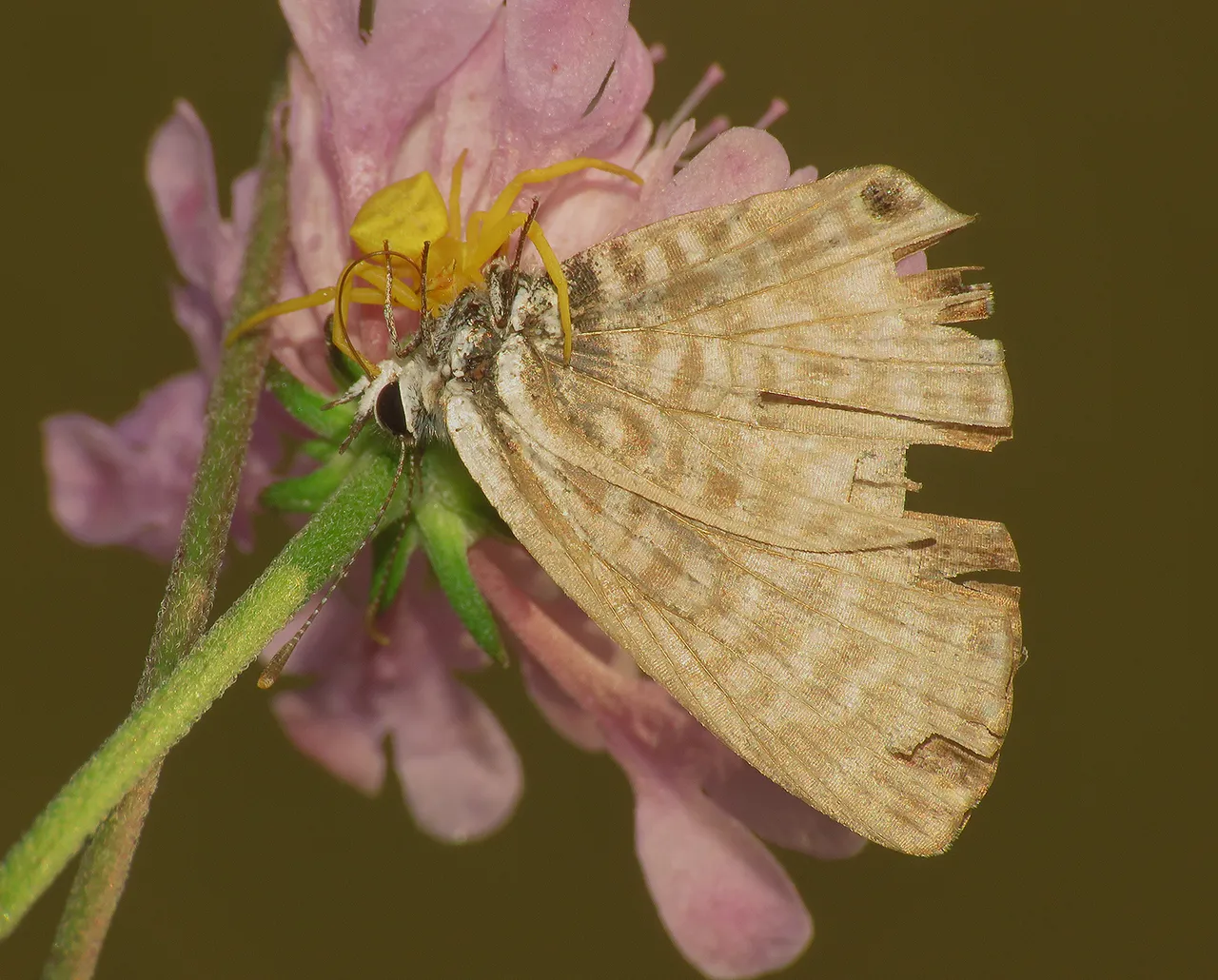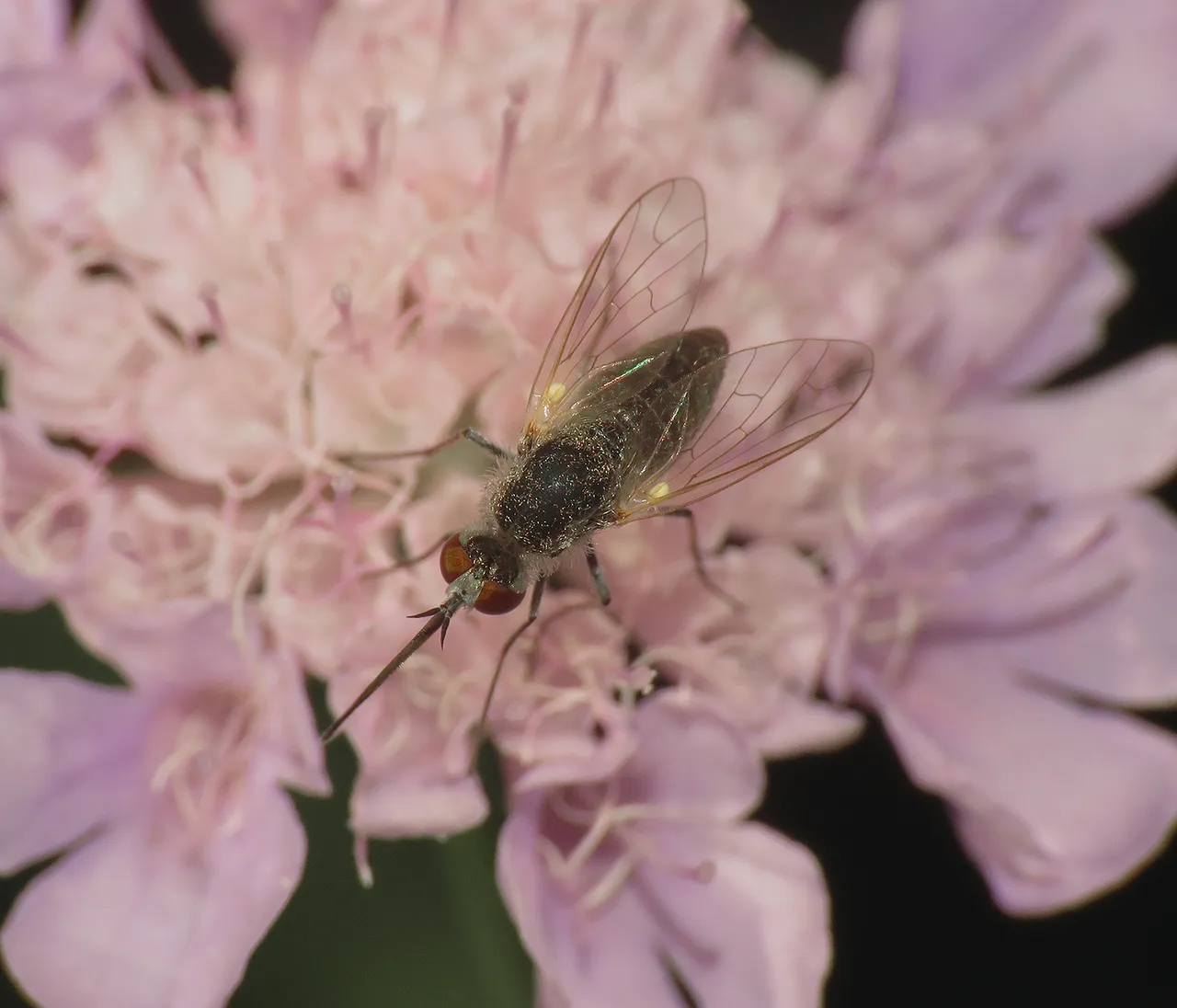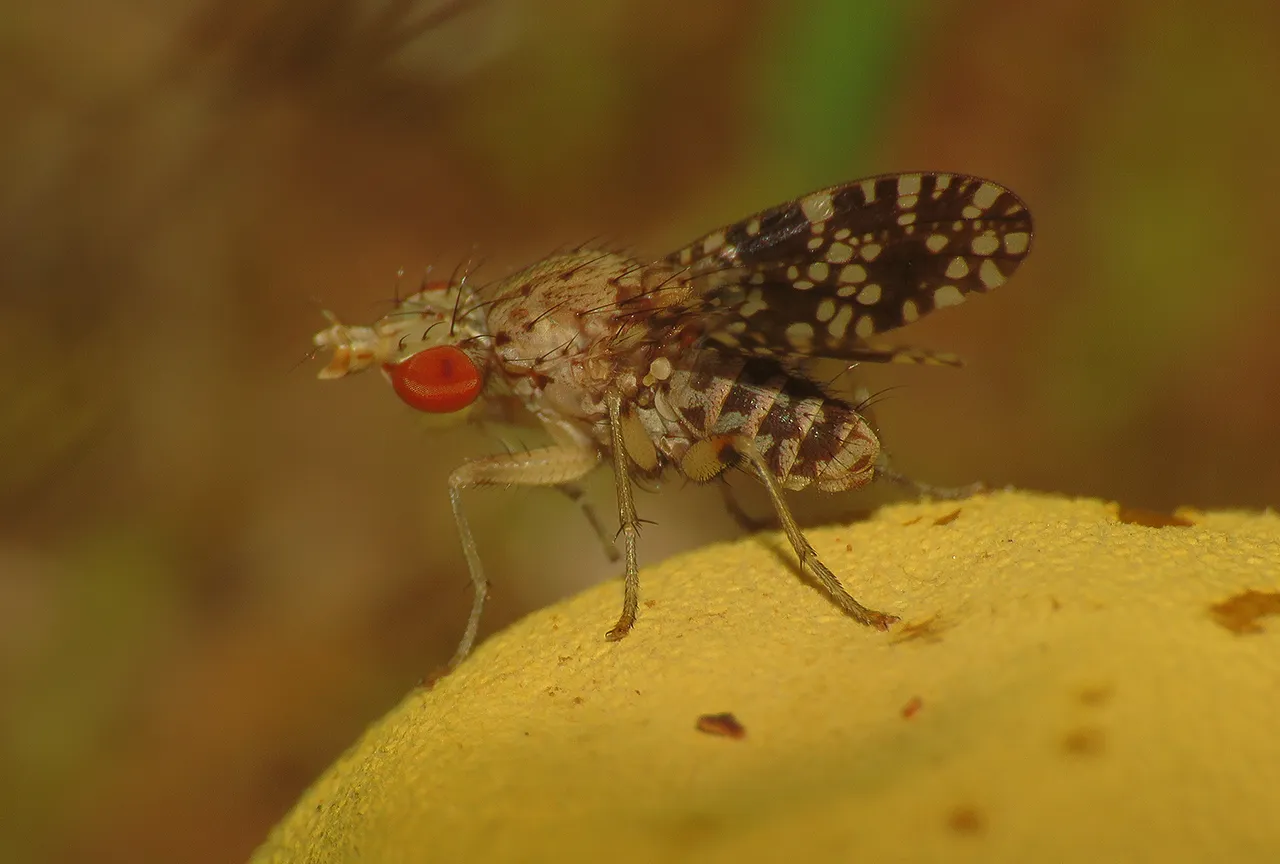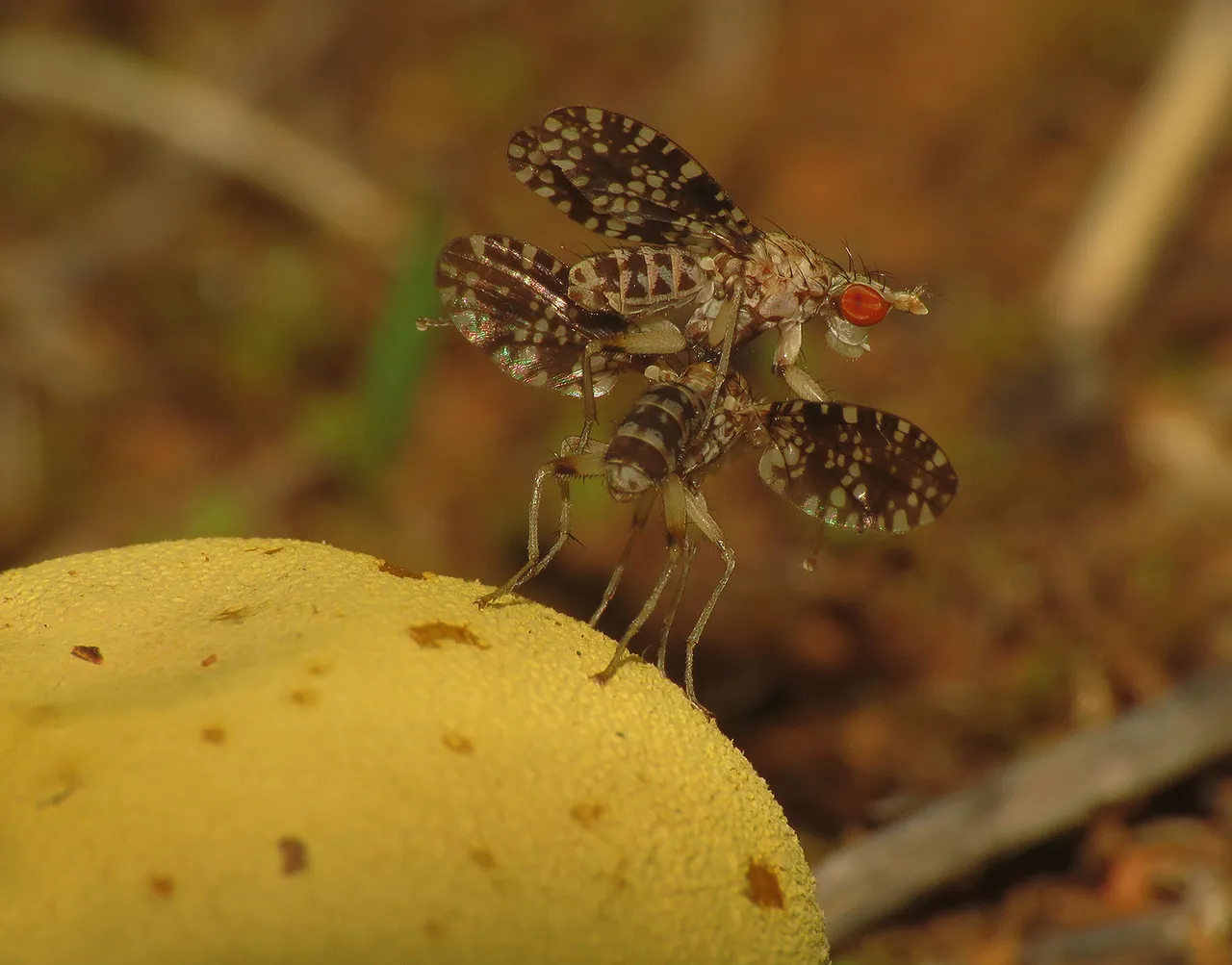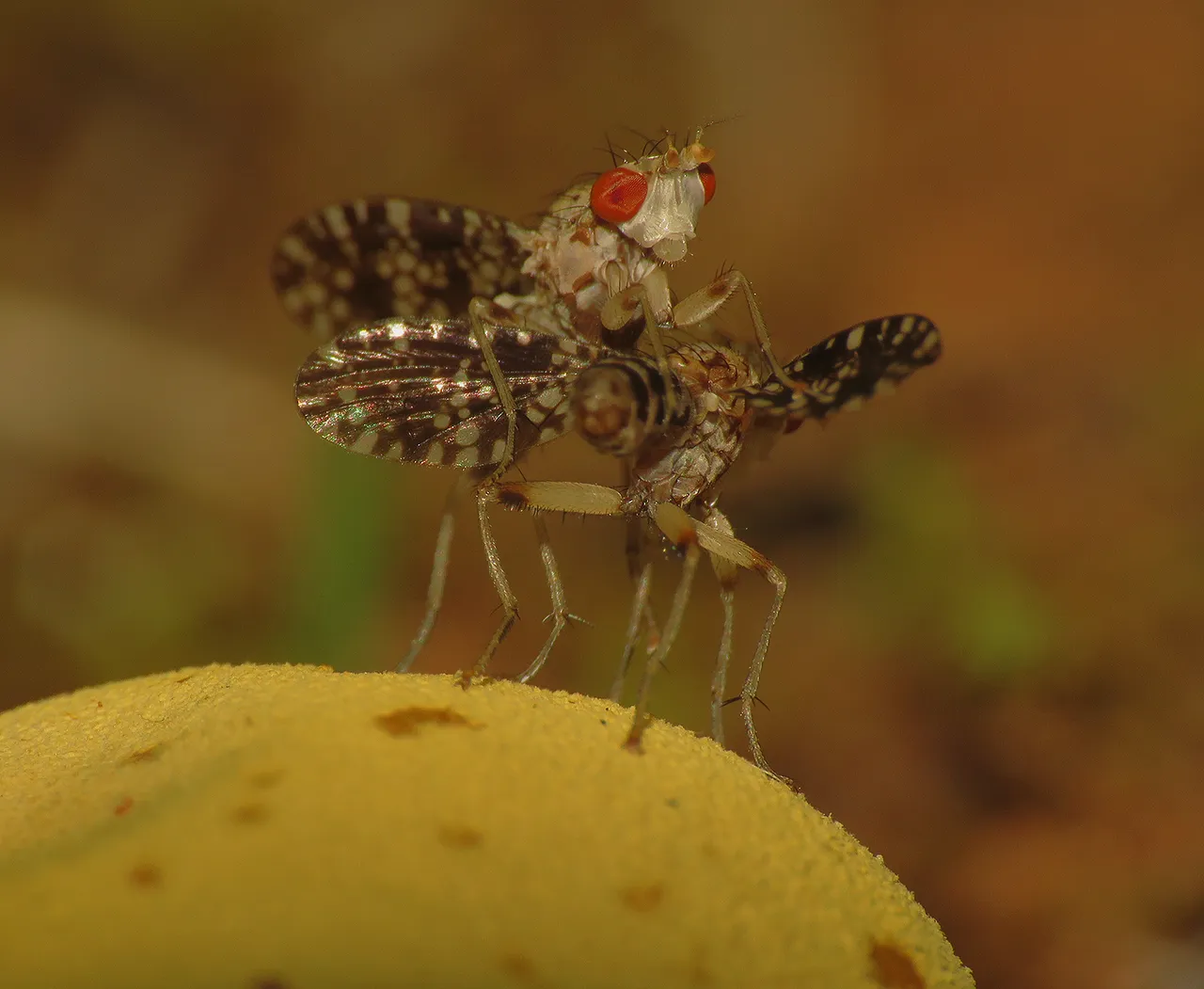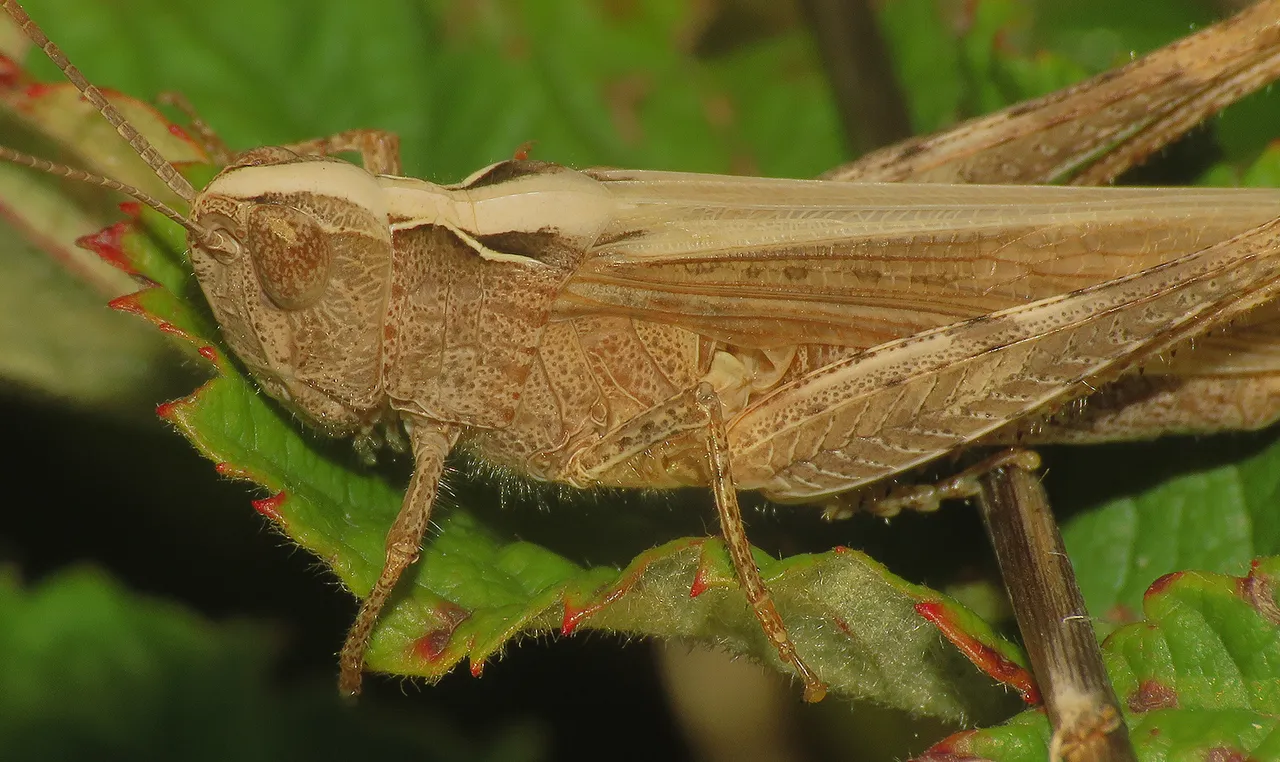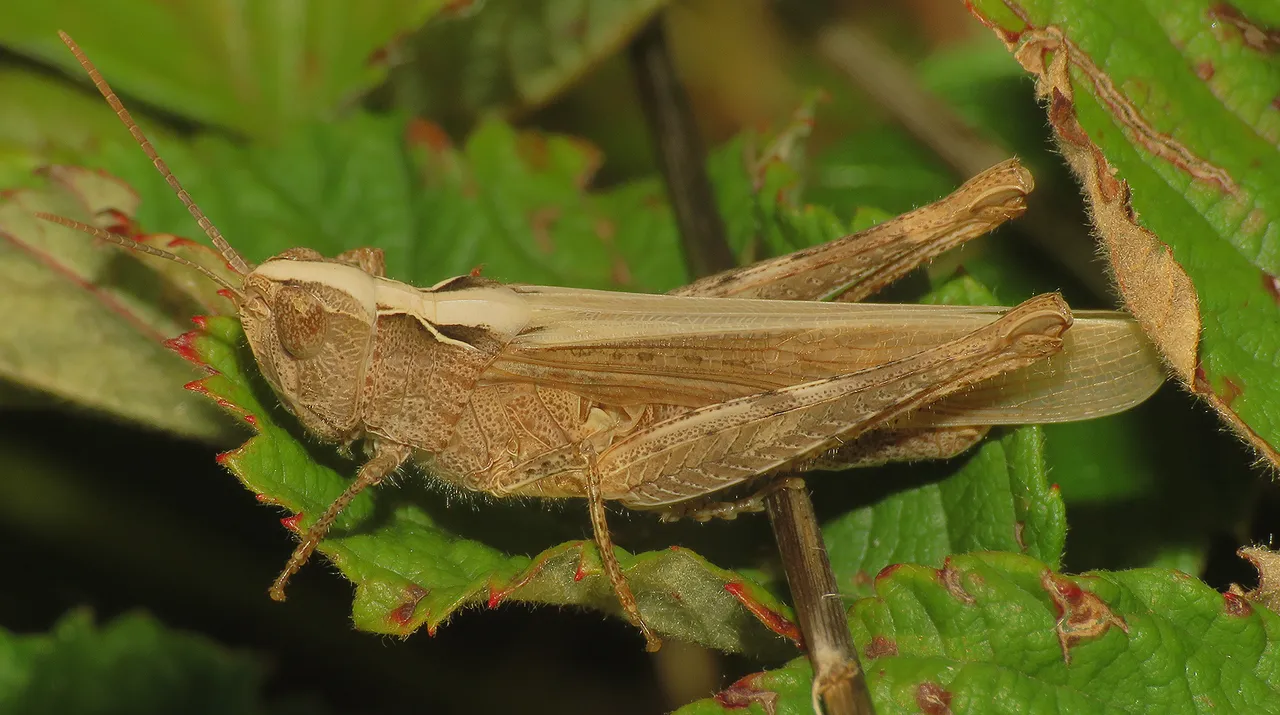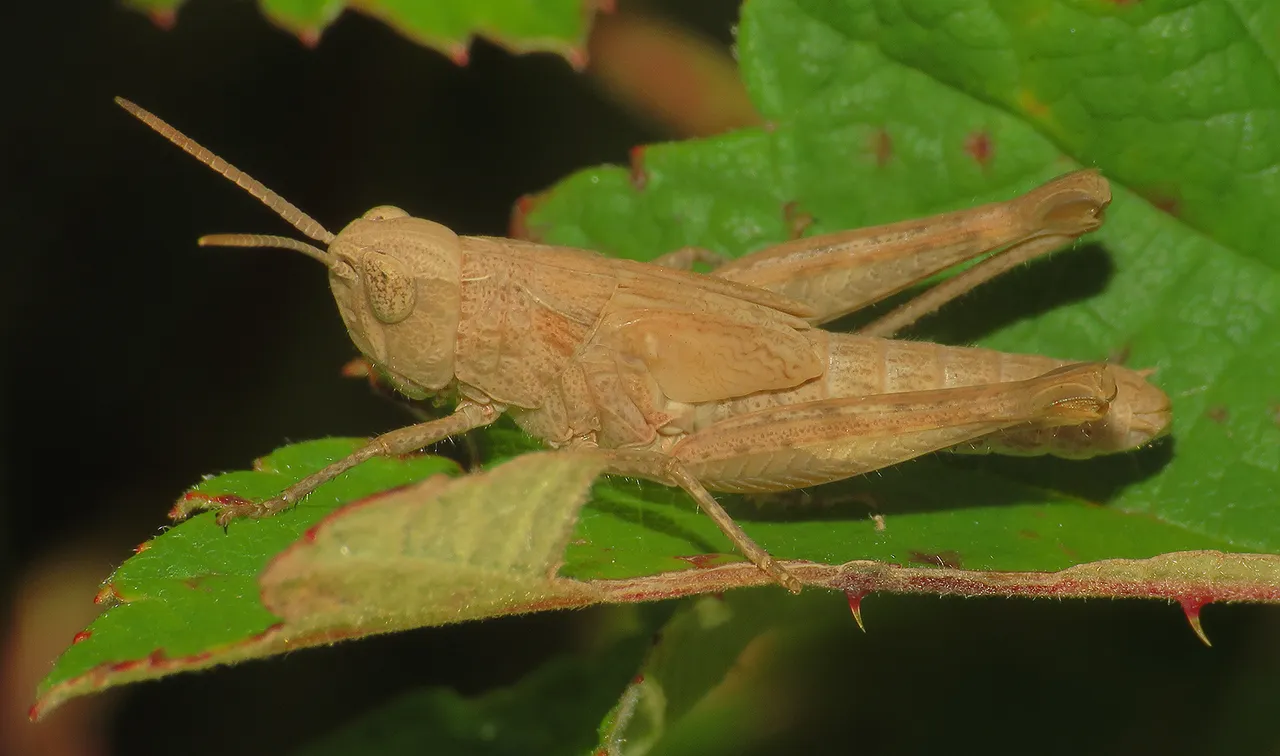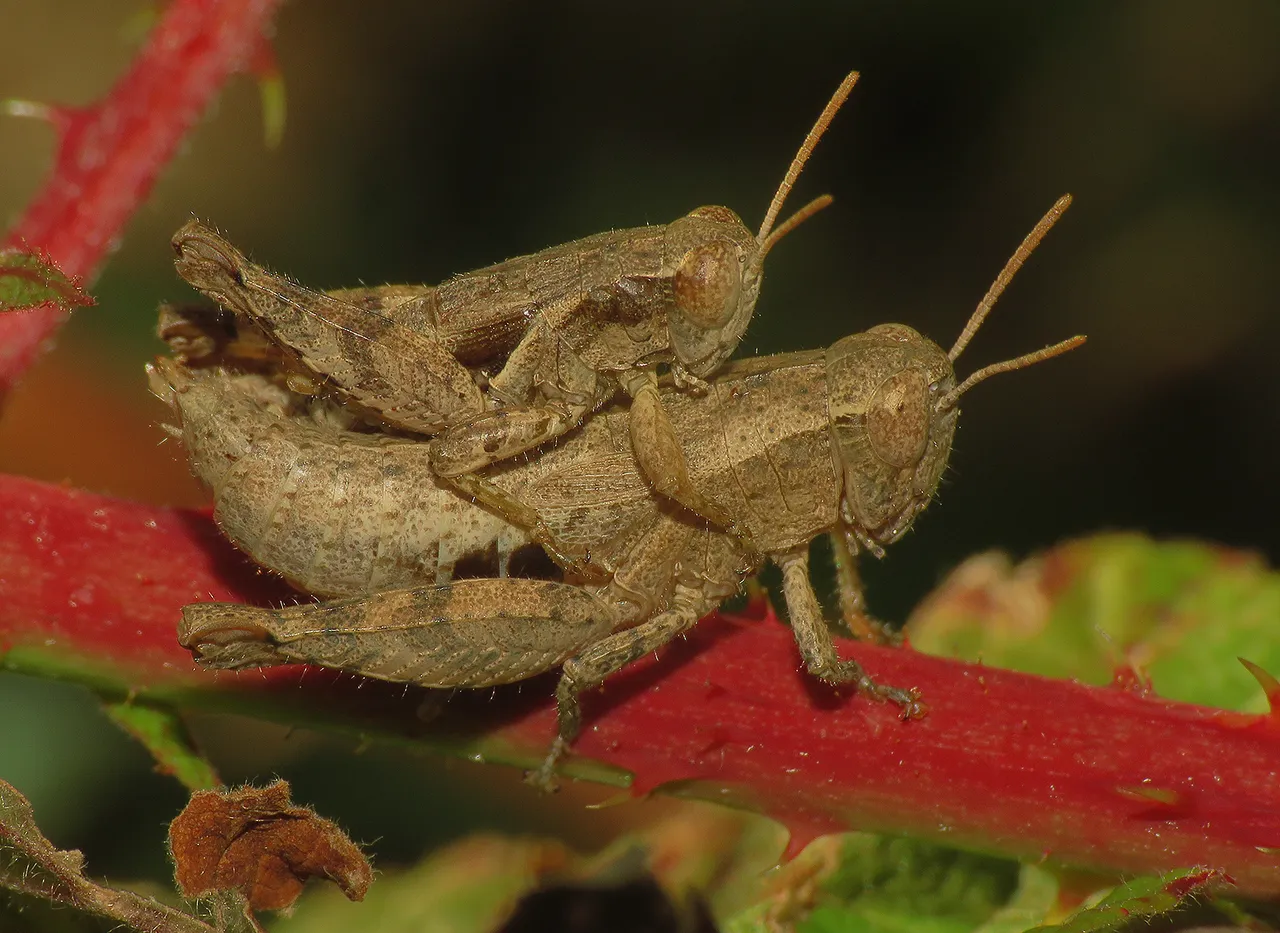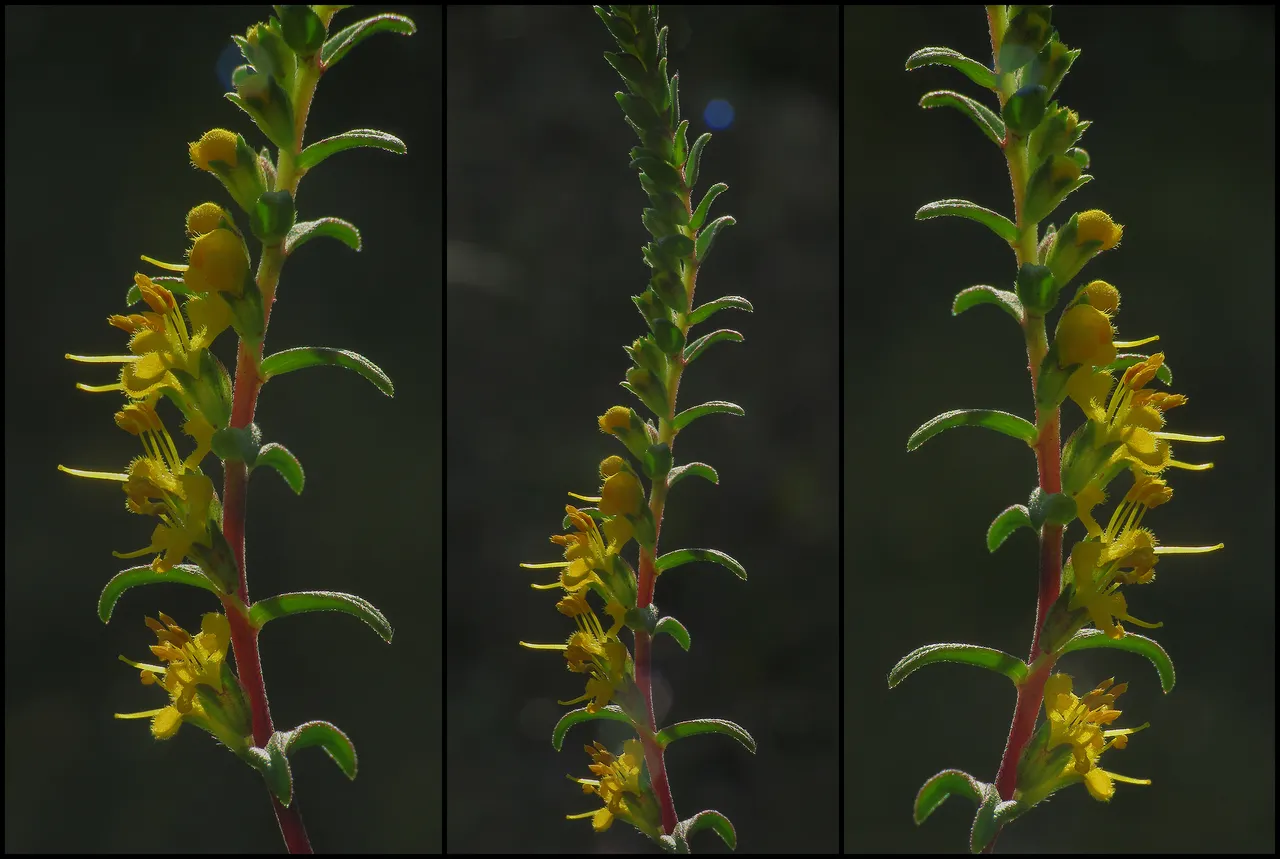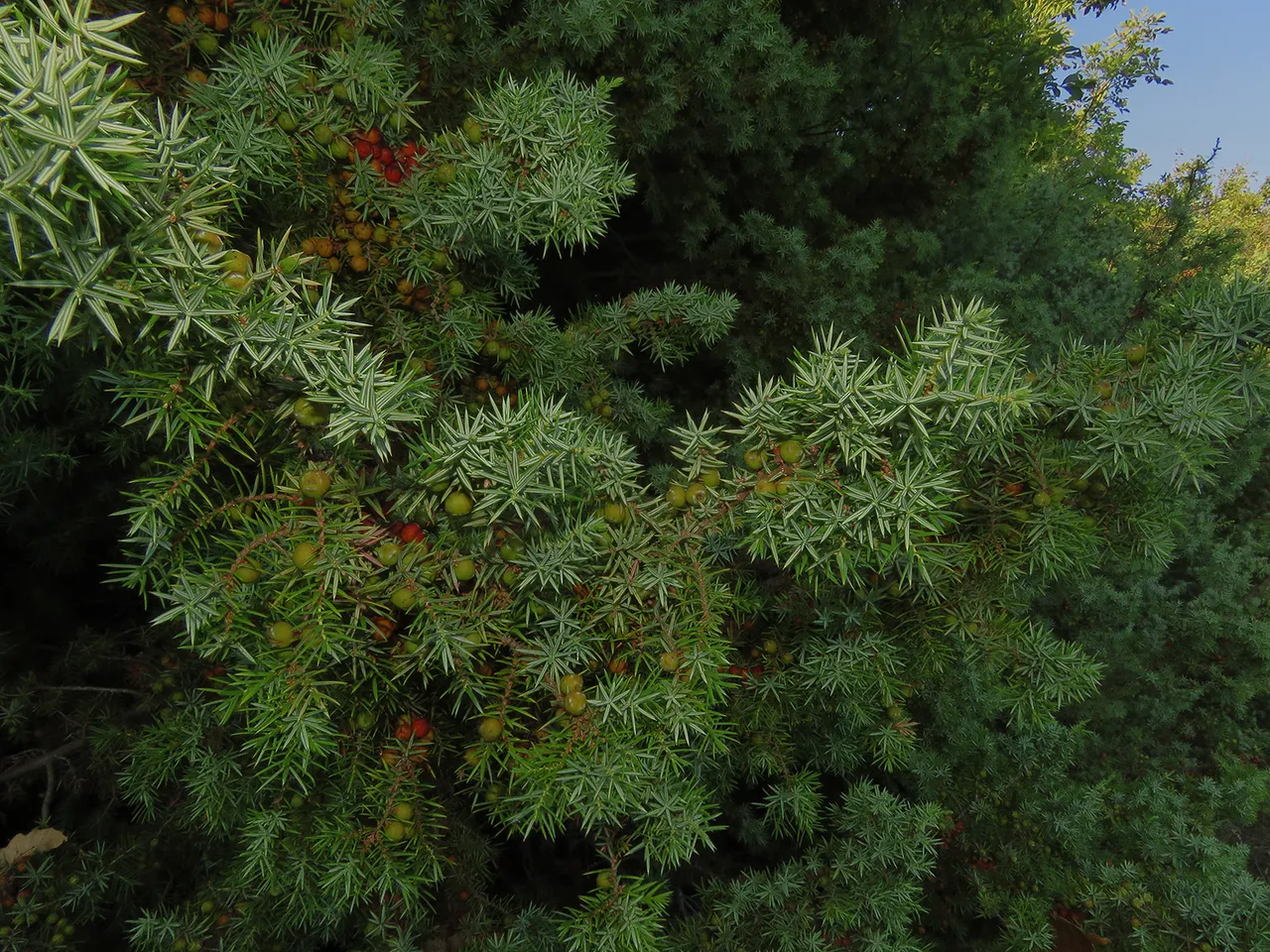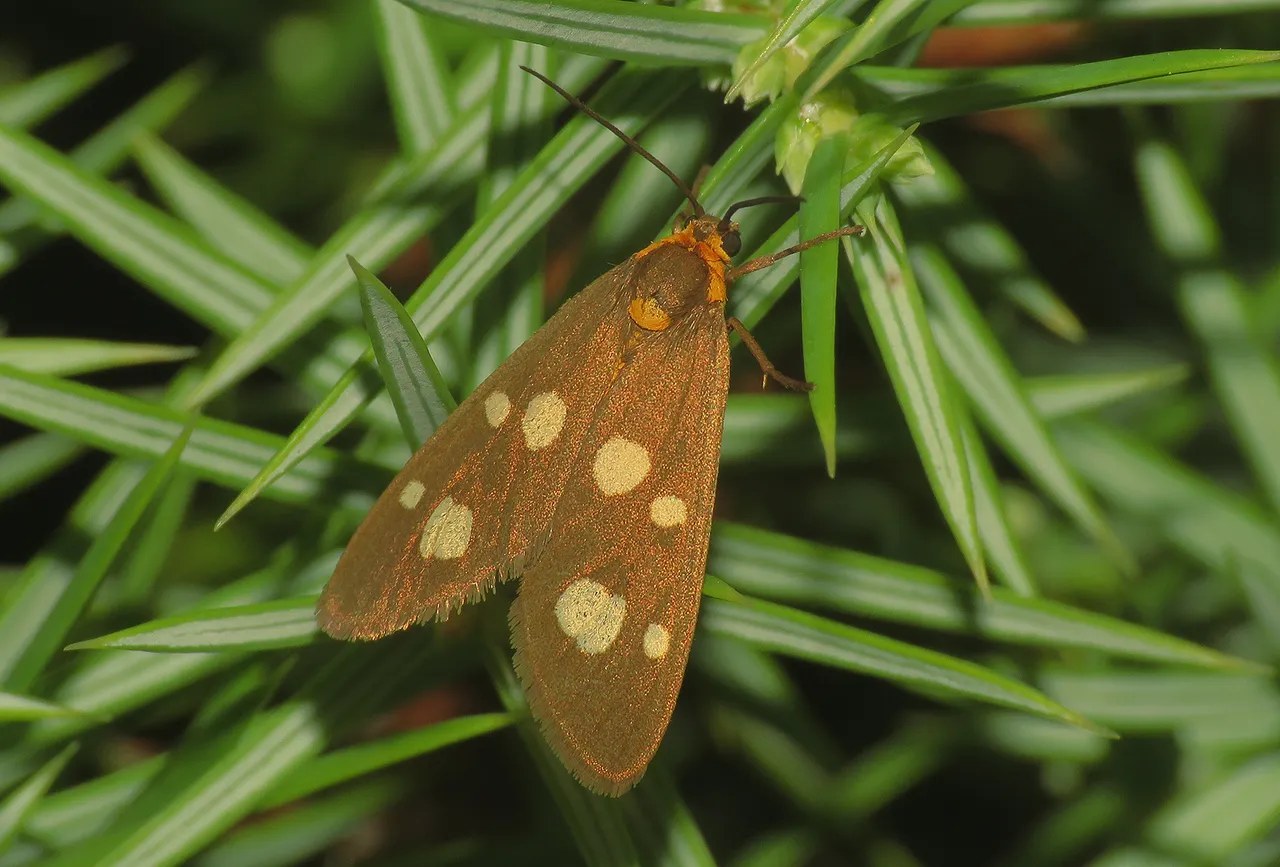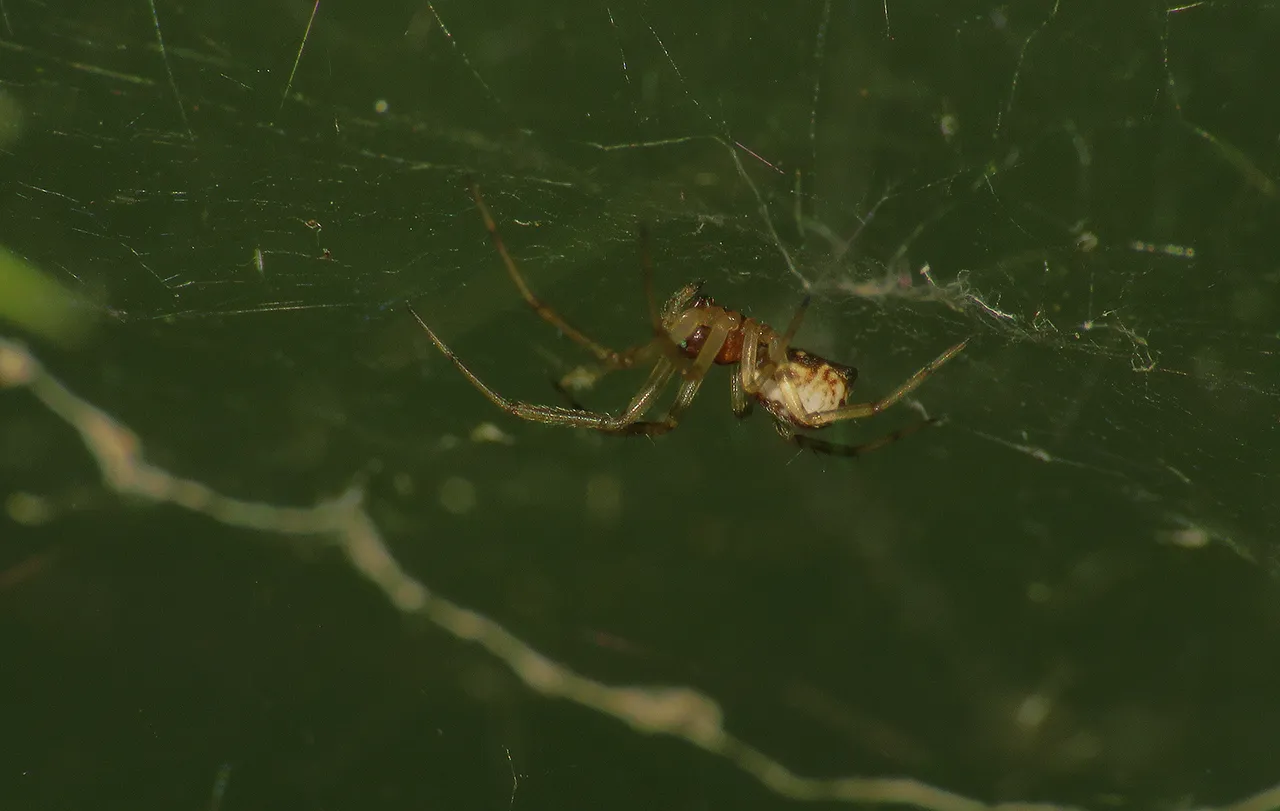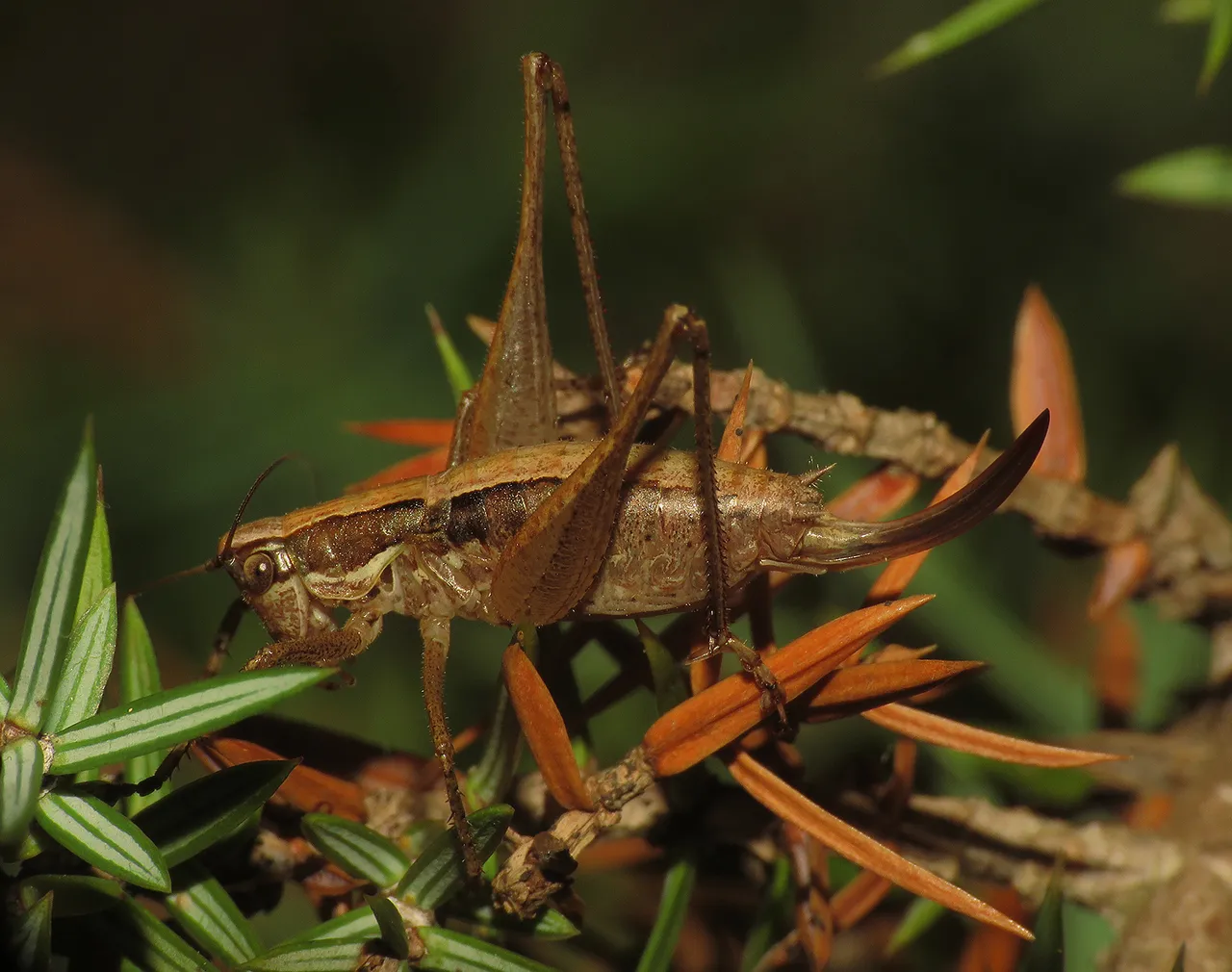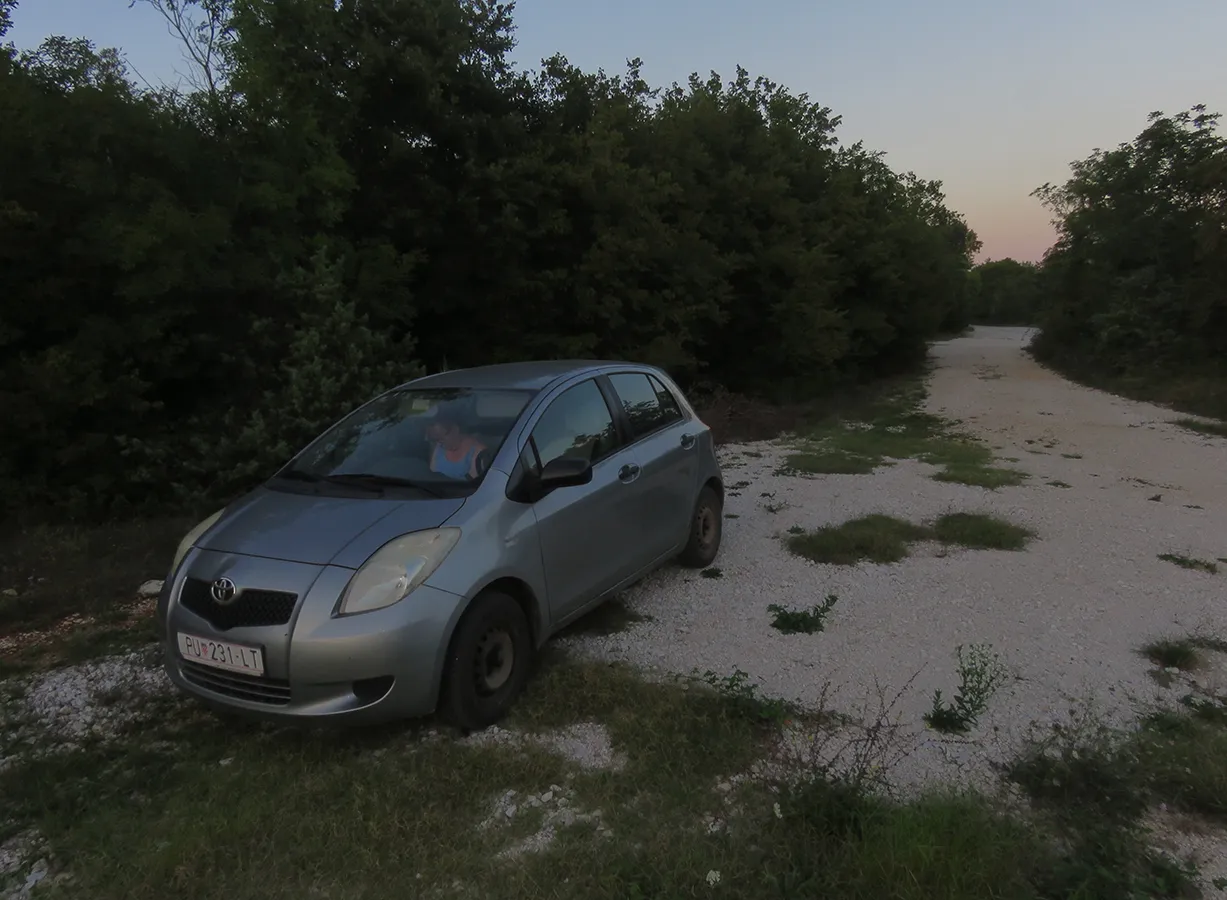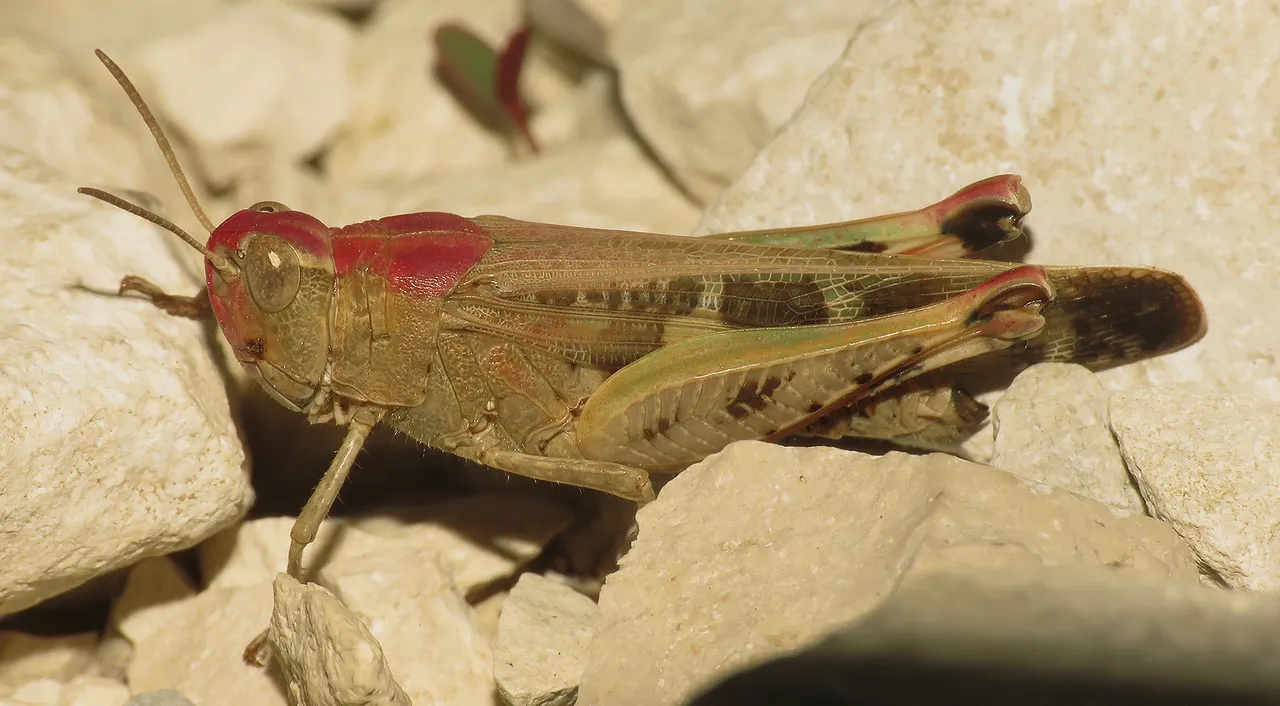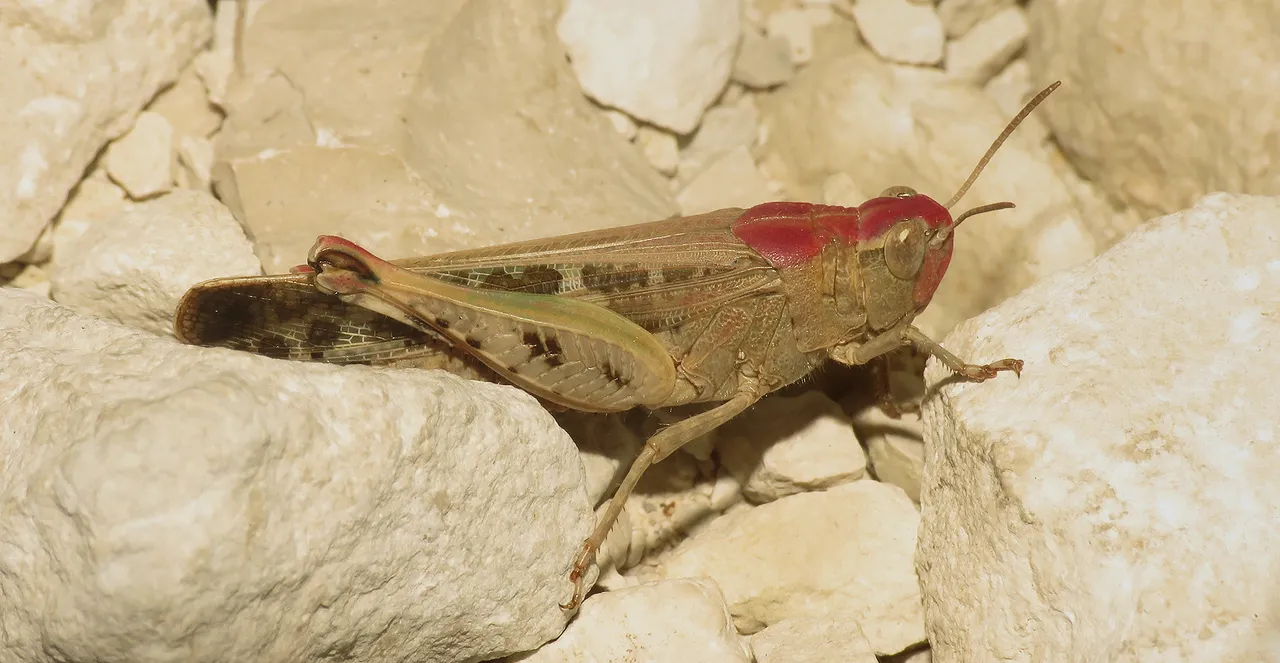Yesterday I drove a little less than thirty kilometers north of my hometown and parked my car in the rural area about five or six kilometers from the small town called Vodnjan.
I planned to spend a couple of hours surrounded by nature and do a bit of recreational macro photography - and that's exactly what I did. In this post, you'll see some insects, spiders, and plants I photographed in the late afternoon. Have a good viewing.
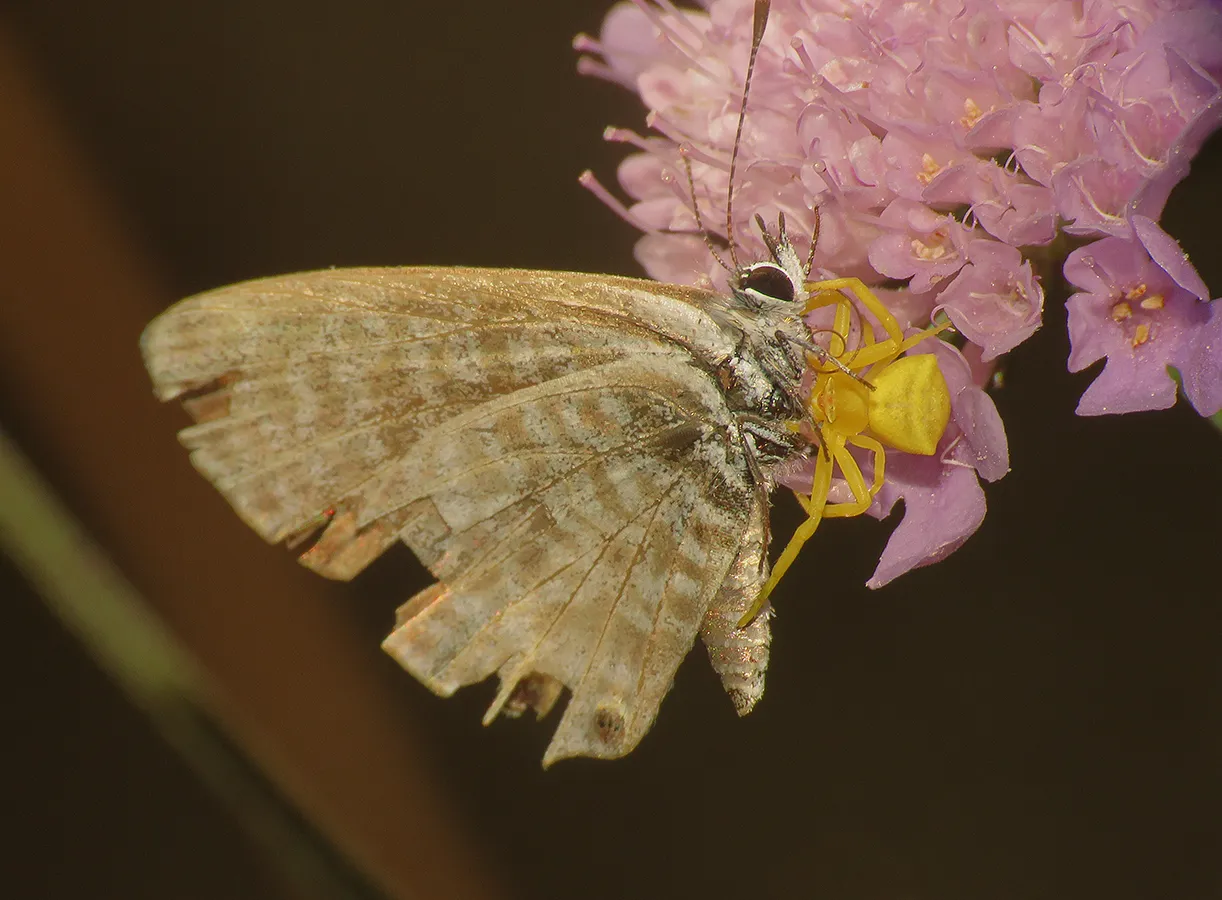
The first thing you'll probably notice in this photograph is a small butterfly on the Knautia arvensis flowerhead. But if you'll take a better look ...
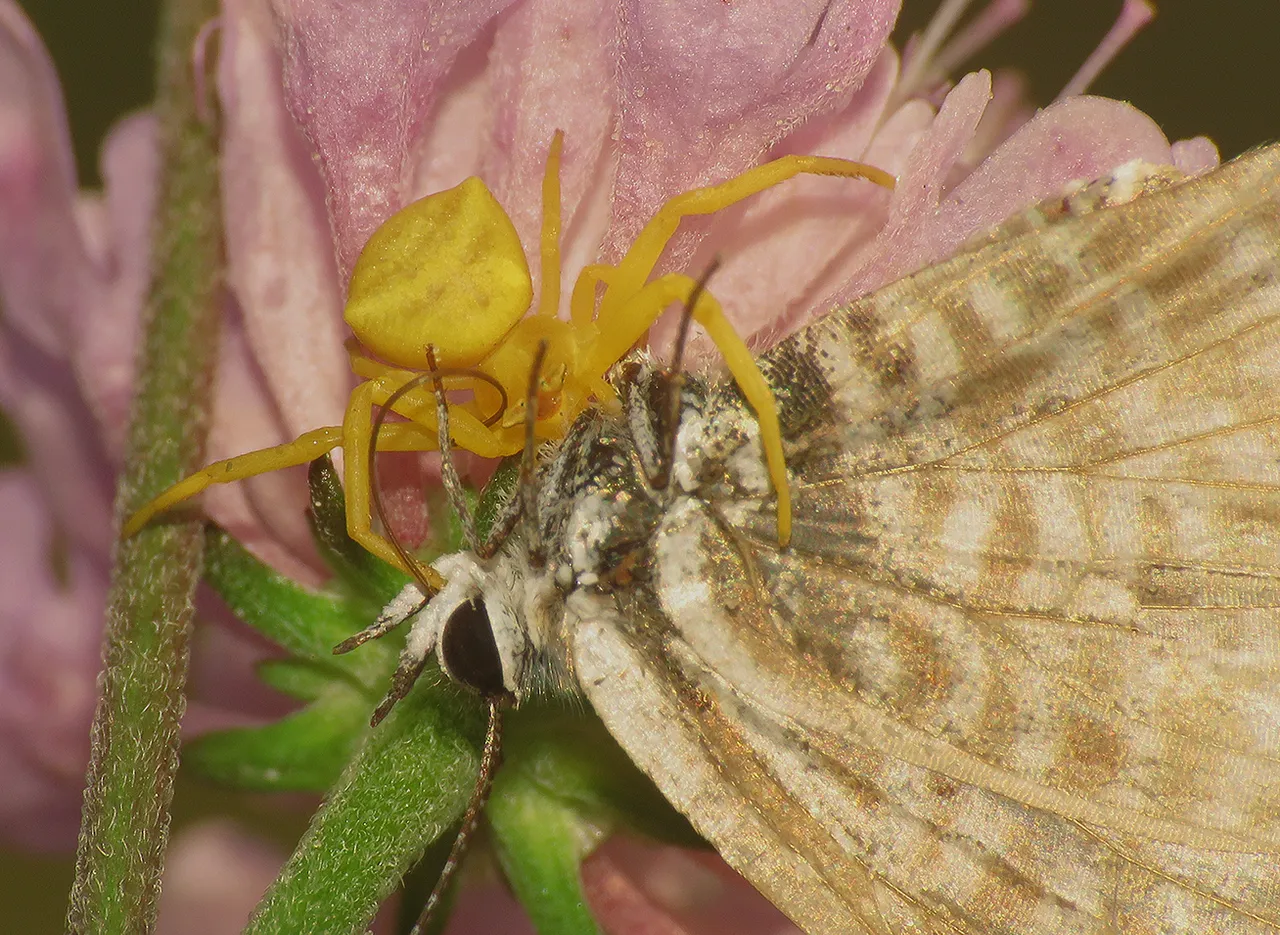
... you'll find a spider in the scene. It's a small crab spider. The name of the species is Thomisus onustus. The family is Thomisidae, of course. These crab spiders are ambush predators, and the one shown in this, the previous, and the following shot ...
... has caught the Lampides boeticus, a butterfly from the Lycaenidae family.
Here you can see the fly I photographed on another Knautia arvensis plant not far from there. In the following photograph ...
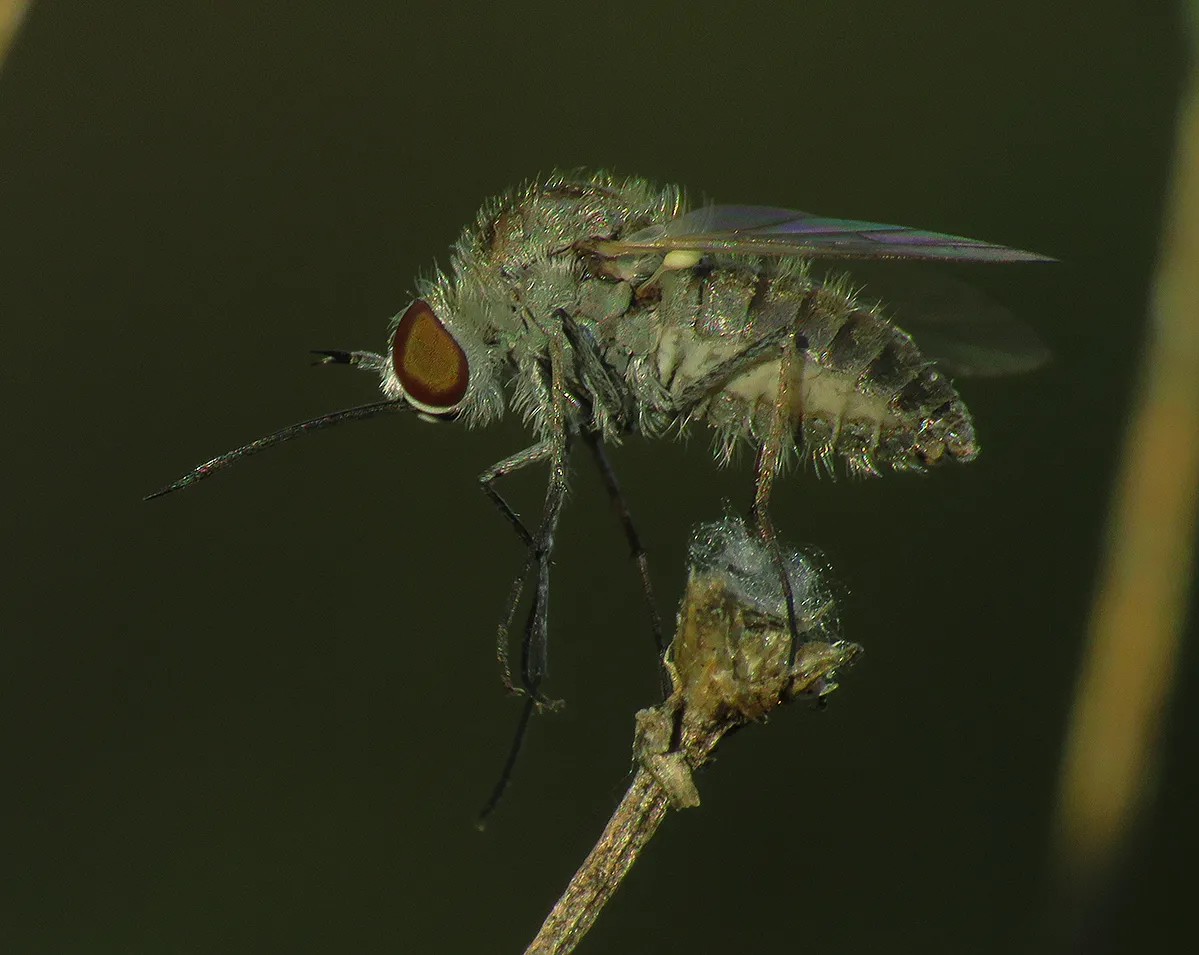
... the same fly is resting on some dry herbaceous plant I wasn't able to identify.
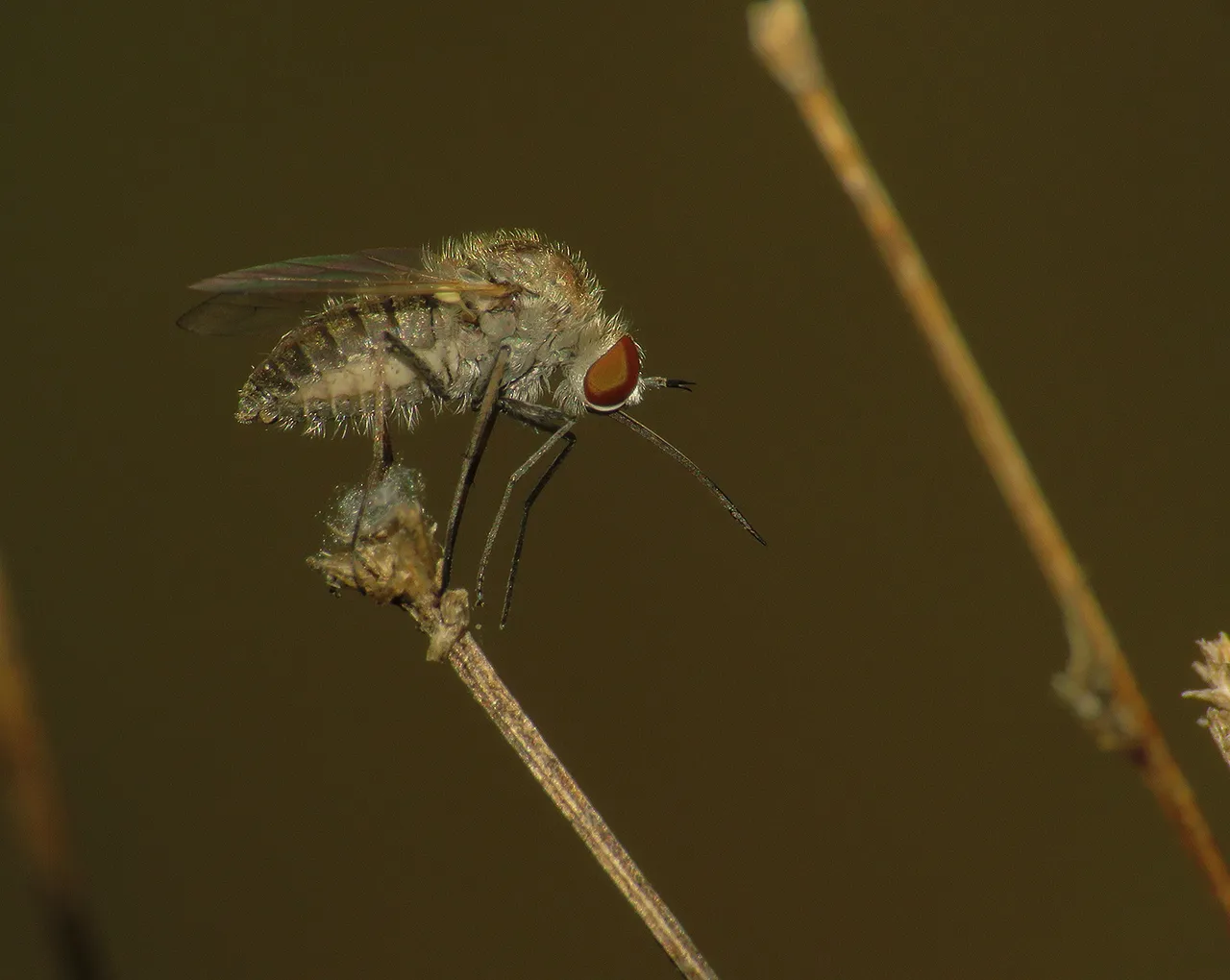
When it comes to the fly, I can't tell you what species exactly this is, but I'm sure it belongs to the genus Geron of the Bombyliidae family.

On the small clearance surrounded by dense and intricate herbaceous vegetation, I found a puffball mushroom. Or, more precisely ...
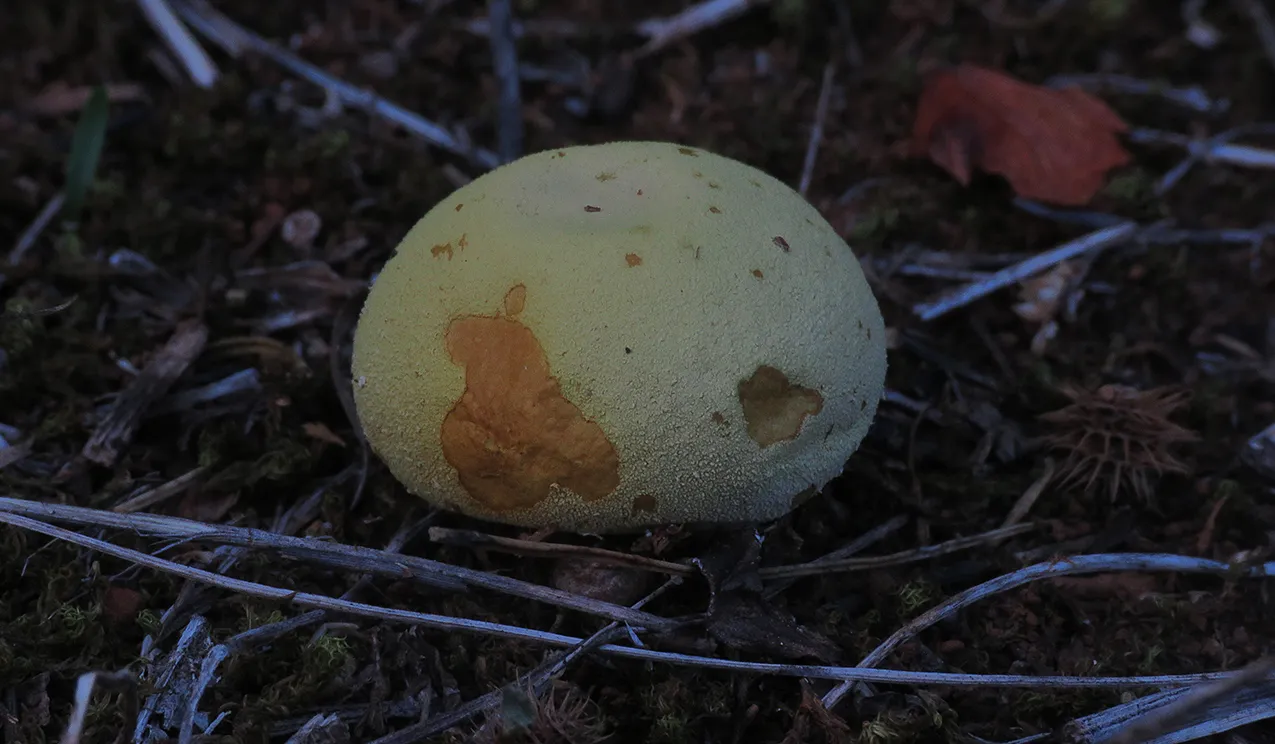
... a Bovista pusilla fruiting body. While I was photographing the puffball...
... a small fly with painted wings landed on the top of the rounded mushroom.
Trypetoptera punctulata is the name of this species from the Sciomyzidae family. Sciomyzidae are commonly known as marsh flies. Unlike most of its Sciomyzidae relatives, Trypetoptera punctulata prefers dry habitats, especially grasslands and shrublands on calcareous soil. I observed the fly for a minute or so, and then ...
... another Trypetoptera punctulata entered the scene. It looked like flies might start mating at any moment, but then ...
... they started to fight.
The opportunities to photograph this or similar behaviors in nature don't come very often. The action lasted only a few seconds.
I used the flash of my camera in most of these photographs because the light in the shade of the shrubs was relatively low, but I did take a shot or two in ambient light from time to time. Just to show you the atmosphere as I really saw it.
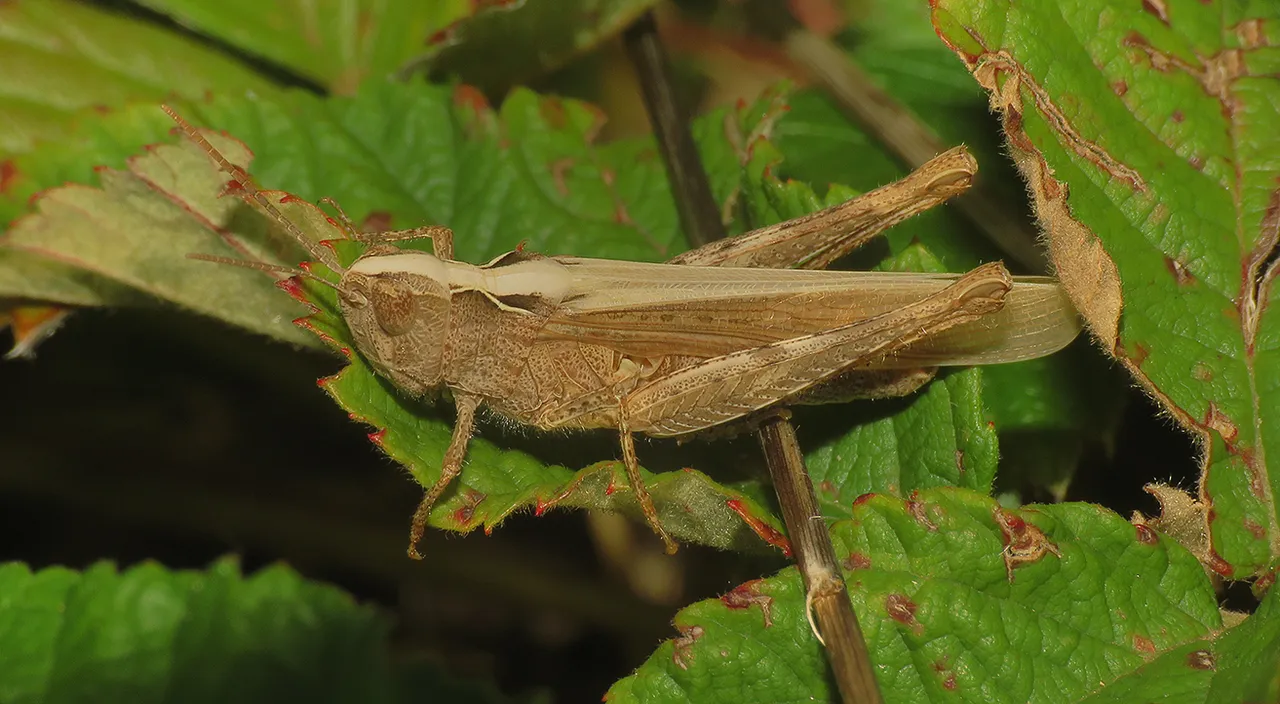
The grasshopper shown in this and the following two photographs...
... is the Chorthippus vagans ...
... a species from the Acrididae family. The grasshopper was resting on the leaves of the blackberry shrub. Not far from there ...
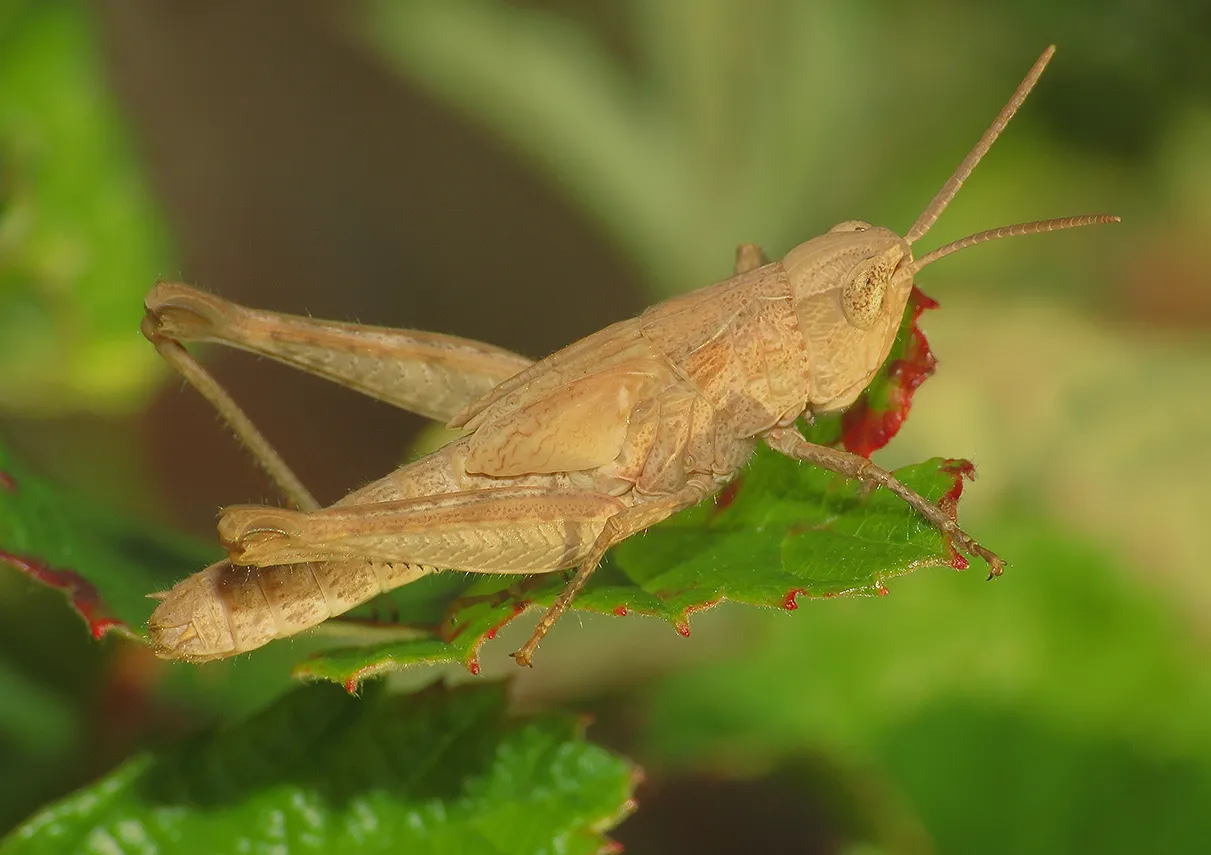
... on the same shrub ...
... I photographed a Chorthippus vagans nymph.
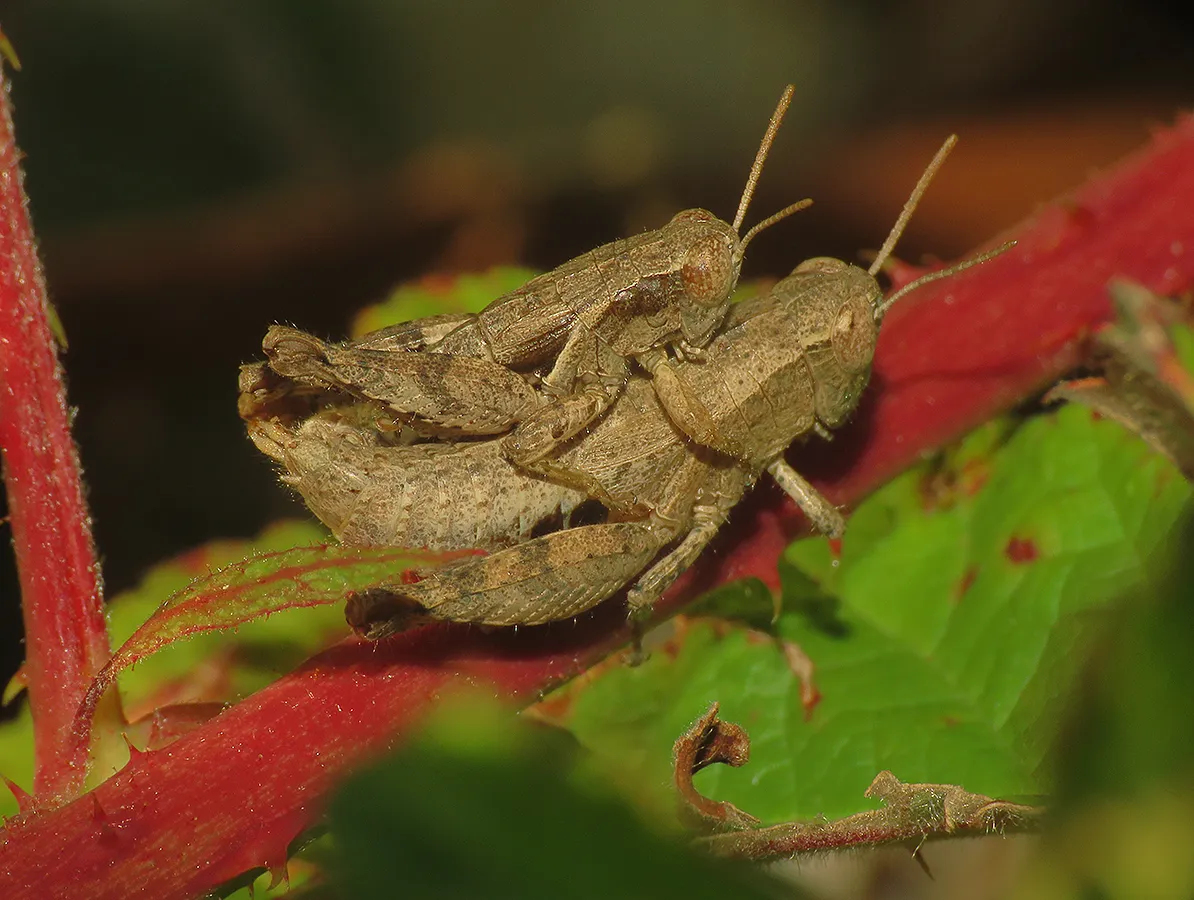
Due to their small brachypterous wings, these two adult Pezotettix giornae grasshoppers look like typical grasshopper nymphs.
Telling an adult from a nymph isn't always easy in this species. In the following photograph ...
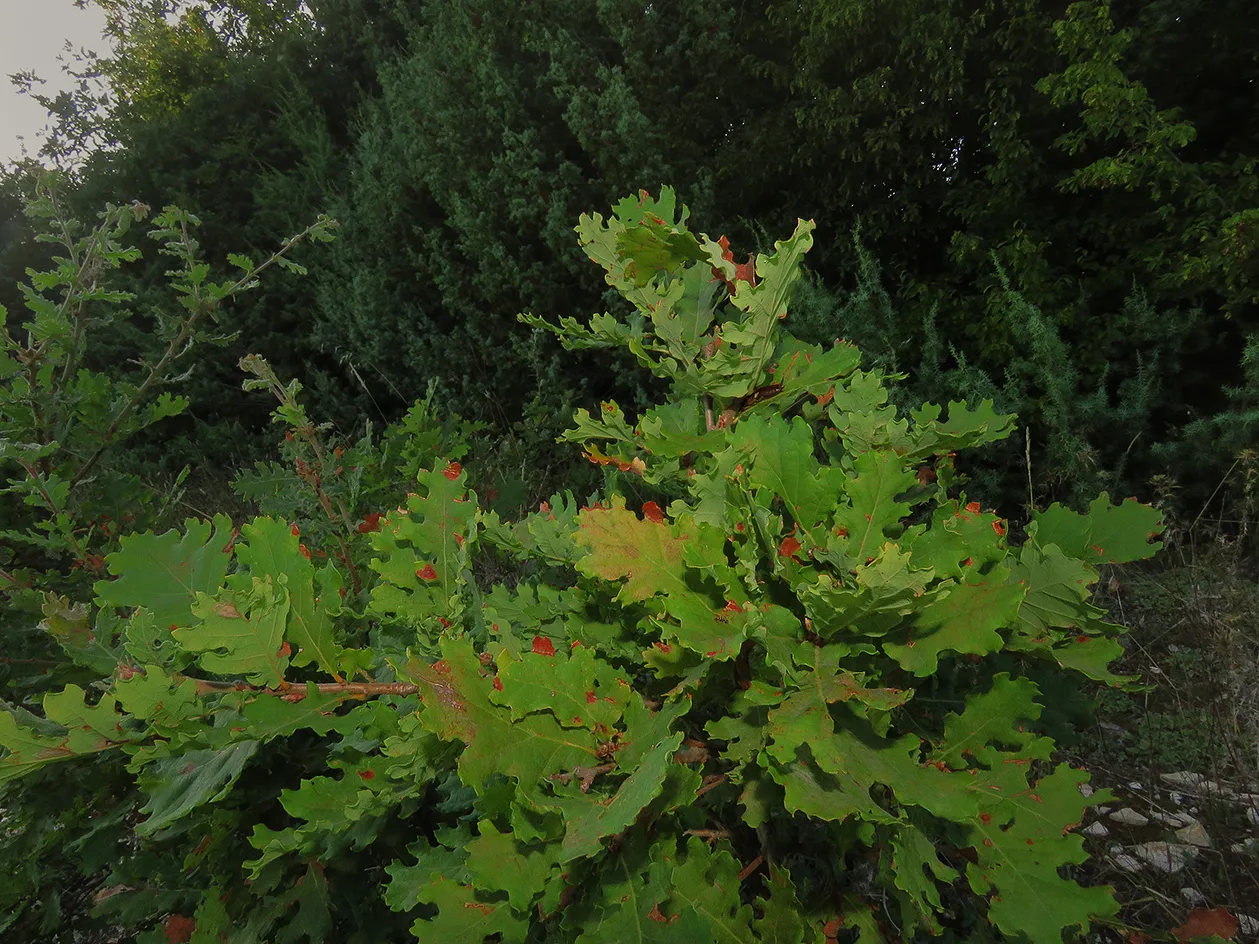
... you can take a short break from the macro view by taking a look at a small, shrub-like Quercus robur tree. Among its foliage ...
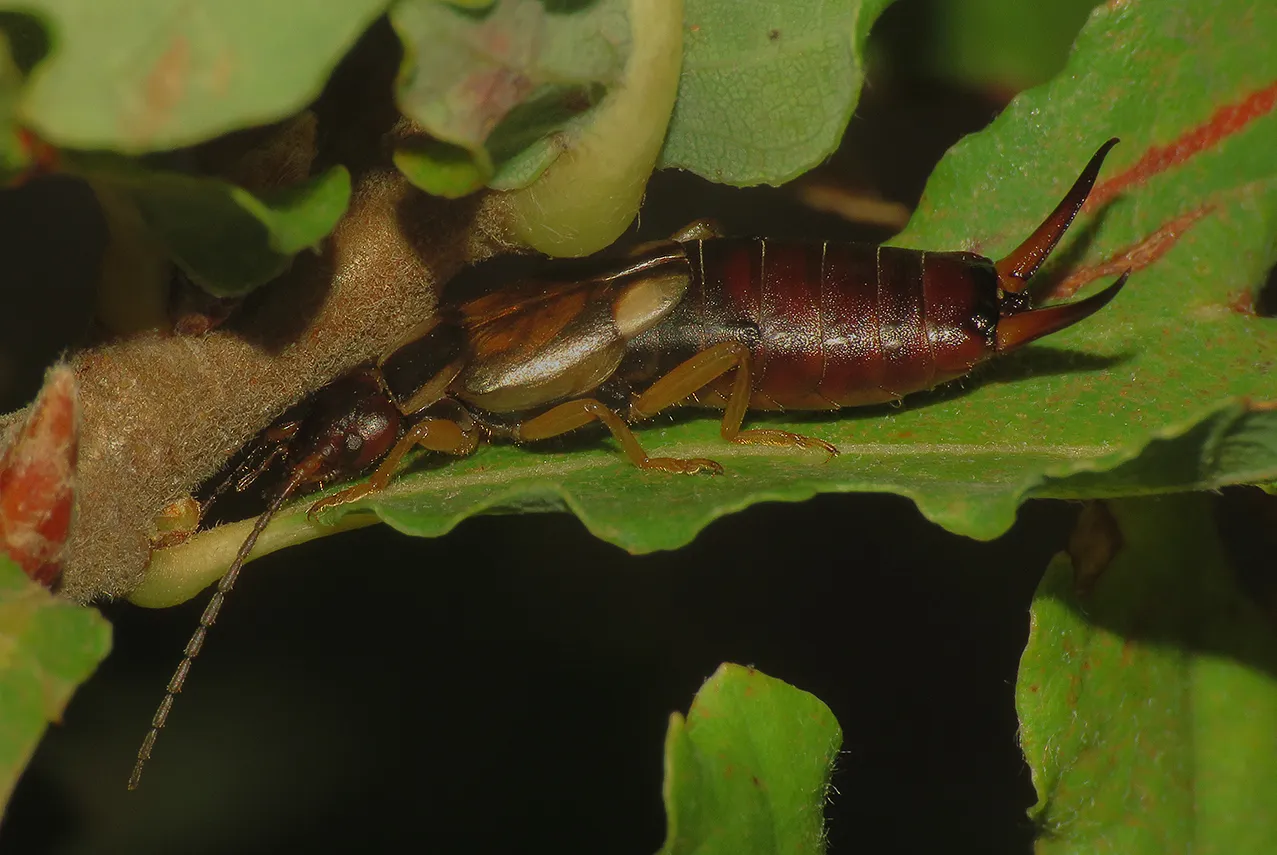
... I found a European earwig (Forficula auricularia).
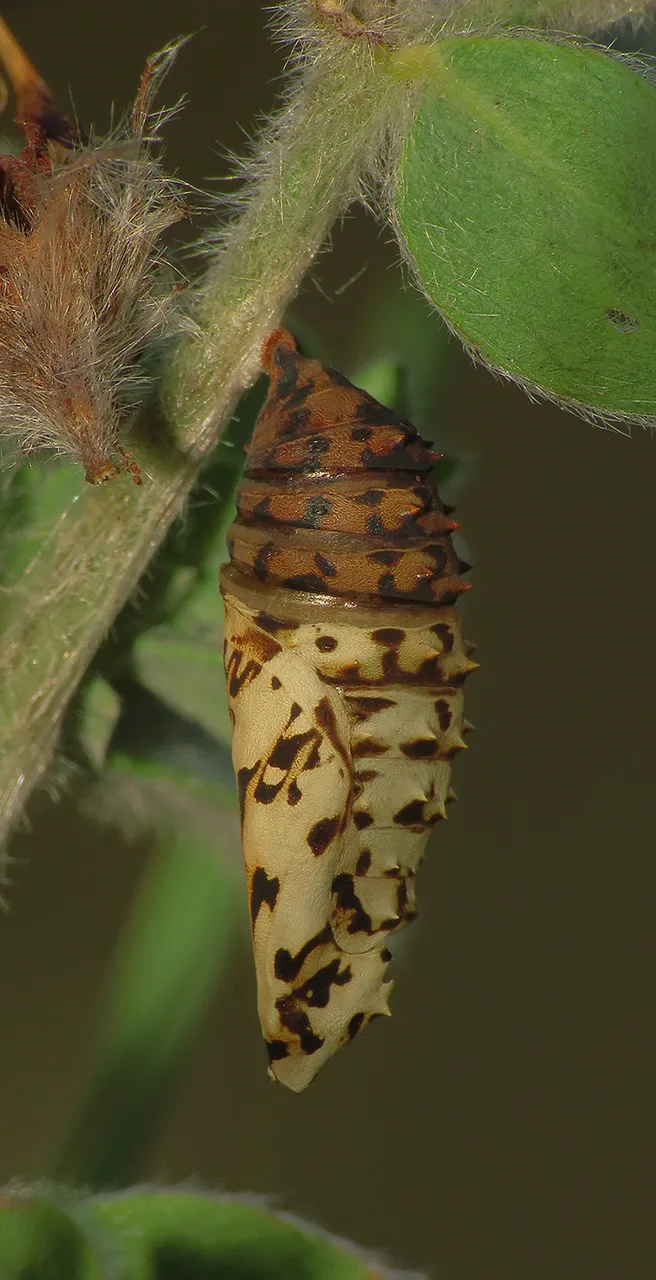
This interesting chrysalis was attached to one of the herbaceous plants under the small oak tree. Once the metamorphosis is over, a brand new Melitaea didyma butterfly will come out of it.
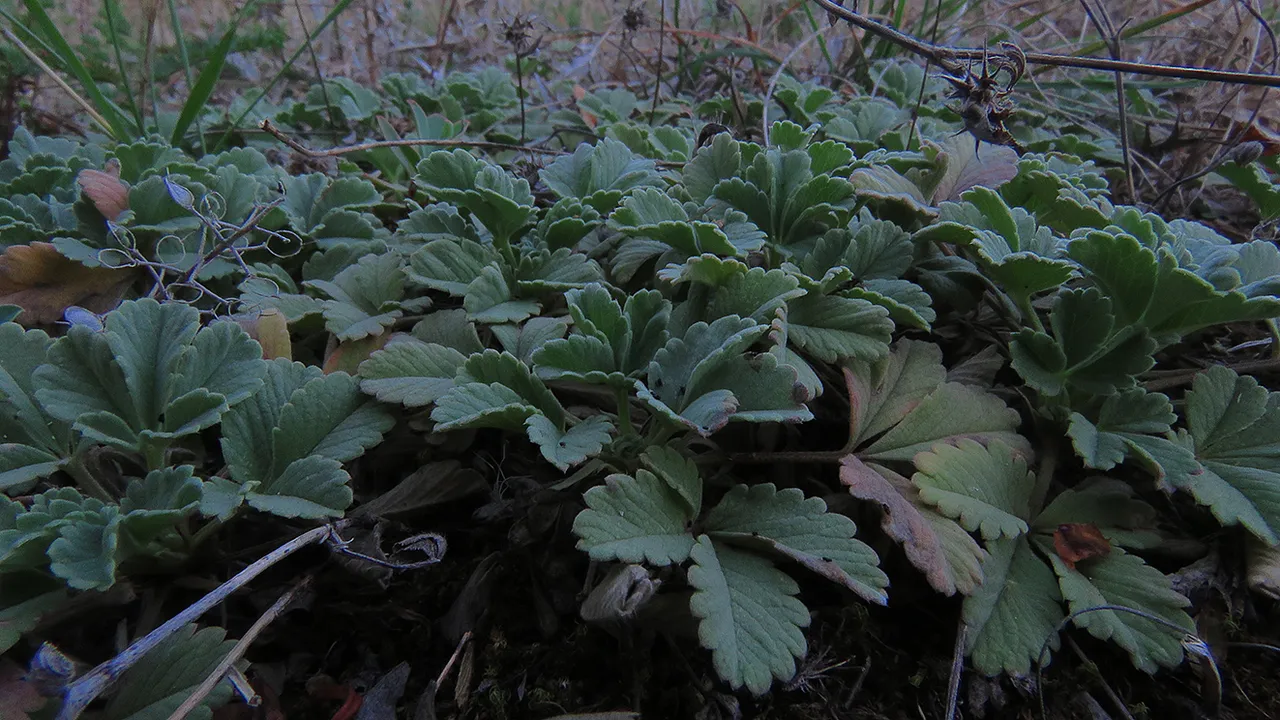
Here you can see the leaves of a very low-growing plant that I photographed near the oak. In this case, I can't tell you the name of the species. The flowers, shown in the following triptych...
... belong to the Odontites luteus plant.
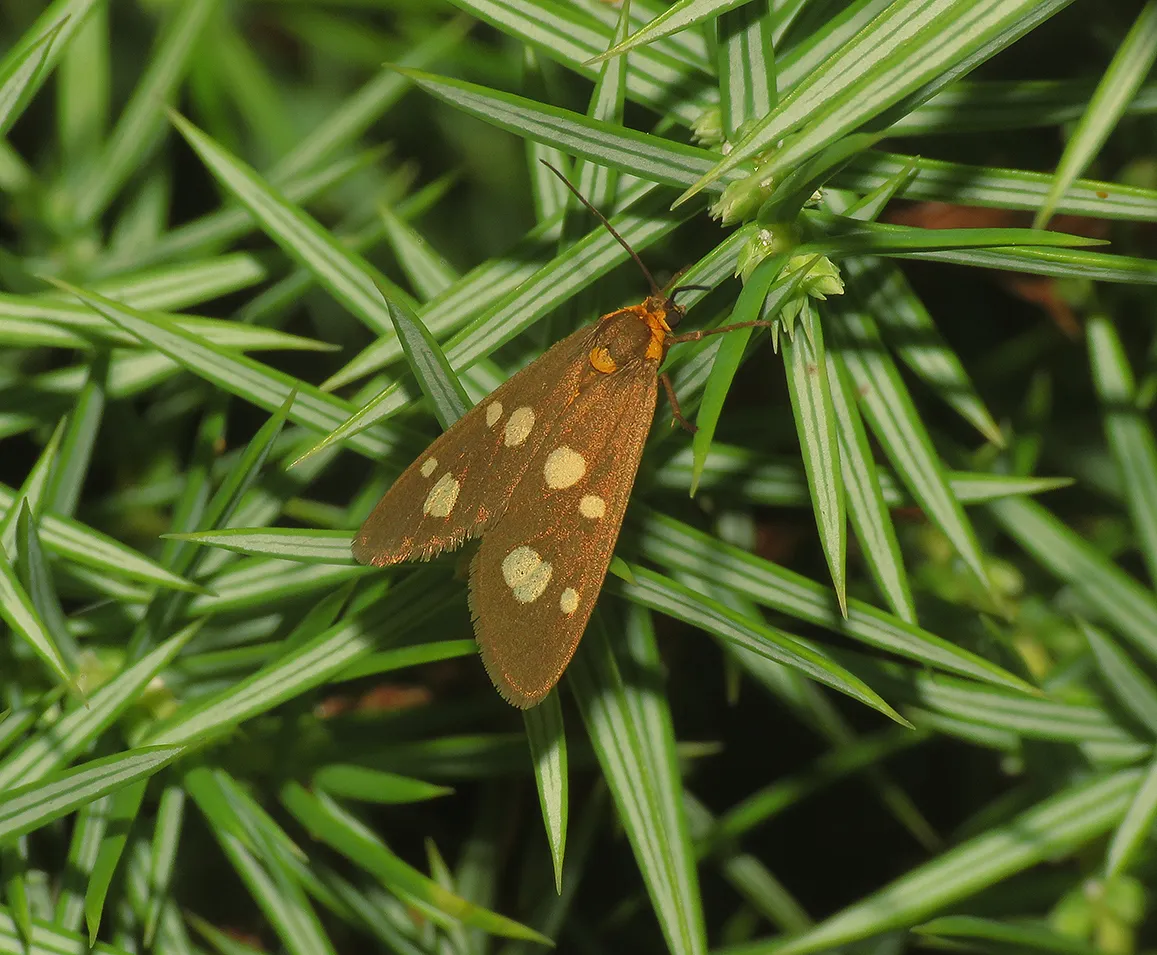
This moth from the Erebidae family ...
... was resting on the Juniperus oxycedrus on the prickly barrier made of a multitude of needle-like leaves of the Juniperus oxycedrus shrub. In one of the previous photographs, the one that shows the small Quercus robur tree, the shrub appears in the background of the shot and is clearly taller than the oak.
The seed cones of this coniferous plant look like little red berries.
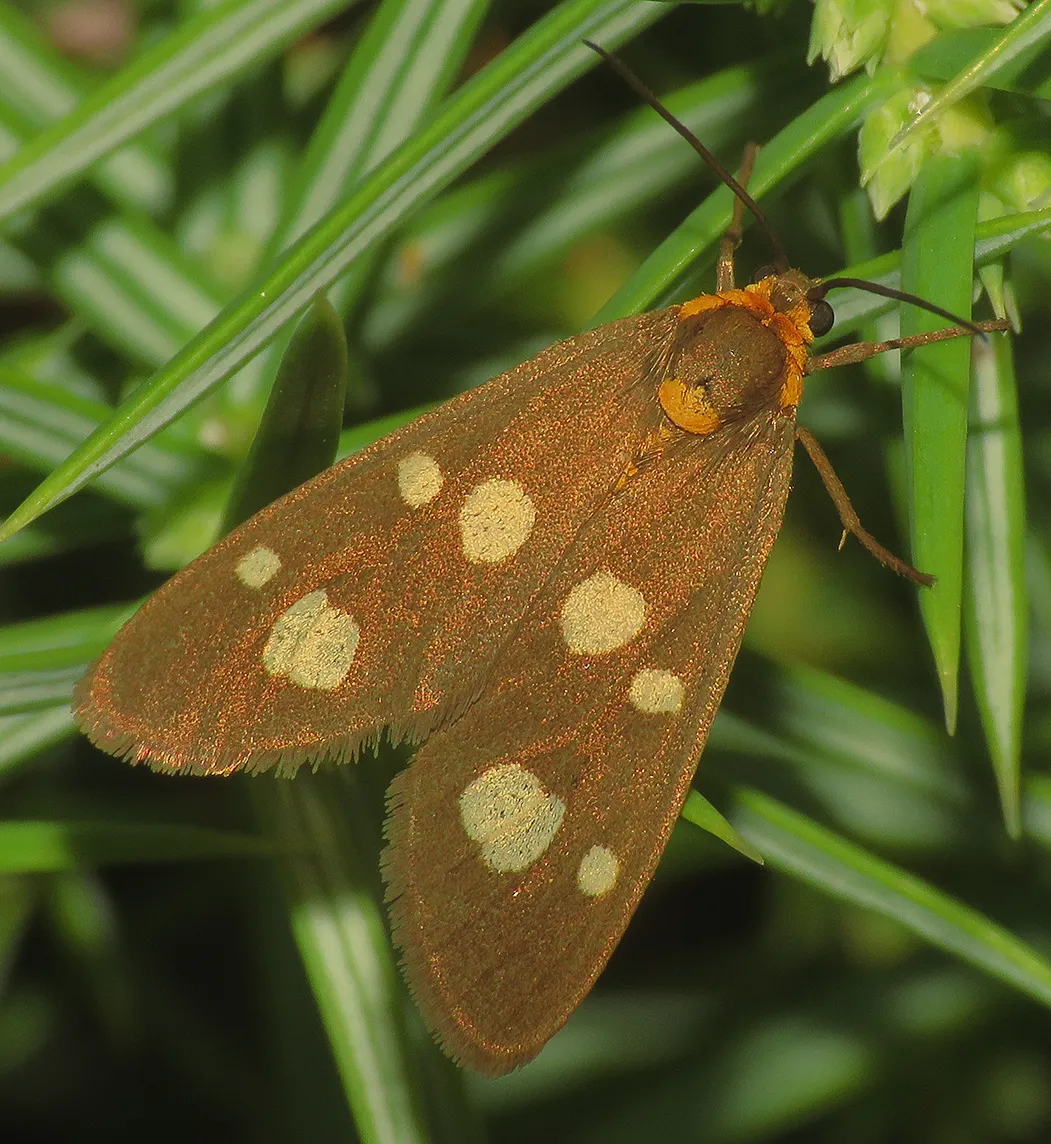
When it comes to the moth ...
... the name of the species is Dysauxes famula.

This tiny spider from the Linyphiidae family has built a horizontal web between the twigs of the same shrub.
The name of the species is Linyphia triangularis.
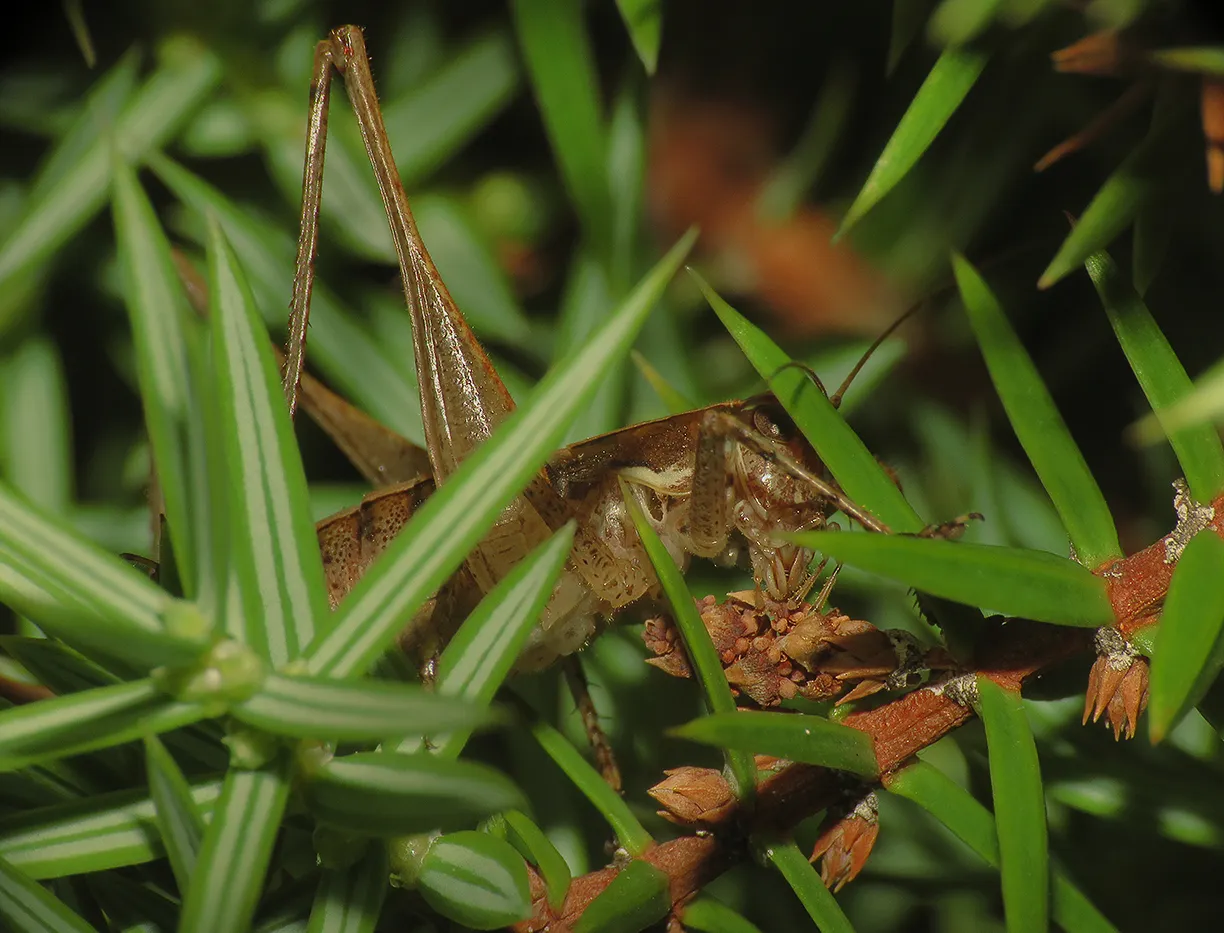
Here you can see ( although barely) a bushcricket hidden among the sharp leaves that offer good protection from quite a few predators. A few minutes later, when the following photograph was taken ...
... the same bushcricket was posing in a much better place so I was able to get a fairly good portrait.
Yersinella raymondi is the name of this species from the Tettigoniidae family.
Here you can take a look at my car parked at the end of a small unpaved dead-end road. It was getting dark so I was ready to go home when the photograph was taken, but ...
... but just before entering the car, I noticed a pretty peculiar grasshopper on the gravel not far from the rear left wheel.
The name of the species is Aiolopus strepens. These grasshoppers are usually completely brown or partially green. Sometimes, especially females can be completely green. I knew that some grasshoppers can be completely or partially magenta or pink probably due to the phenomenon called erythrism but I never saw one with a beautiful magenta-decorated top of the pronotum & head before. Explained in a simple and incomplete way, erythrism is caused by the lack of black pigment (eumelanin) on one hand and on the other hand an excessive production of the red pigment (phaeomelanin).
After this unique encounter, I entered the car and drove away.
The following links will take you to the sites with more information about the protagonists of this post. I found some stuff about them there.
https://en.wikipedia.org/wiki/Thomisus_onustus
https://en.wikipedia.org/wiki/Lampides_boeticus
https://en.wikipedia.org/wiki/Geron_(fly)
https://en.wikipedia.org/wiki/Trypetoptera_punctulata
https://en.wikipedia.org/wiki/Chorthippus_vagans
https://en.wikipedia.org/wiki/Pezotettix_giornae
https://en.wikipedia.org/wiki/Forficula_auricularia
https://en.wikipedia.org/wiki/Odontites_luteus
https://en.wikipedia.org/wiki/Juniperus_oxycedrus
https://en.wikipedia.org/wiki/Dysauxes_famula
https://en.wikipedia.org/wiki/Linyphia_triangularis
https://en.wikipedia.org/wiki/Yersinella_raymondi
https://en.wikipedia.org/wiki/Aiolopus_strepens
AND THAT'S IT. HOPE YOU ENJOYED THIS MACRO SAFARI. AS ALWAYS HERE ON HIVE, THE PHOTOGRAPHS ARE MY WORK - THE END.


